There are televisions that come for testing, and you immediately think: “oh, just another average one, probably like many others.” And basically… that’s true. The TCL C7K doesn’t try to dethrone OLEDs, nor does it shout from the box “revolution!” Yet, after a few days of testing, it’s hard not to think: “wow, this is really good equipment.” And that’s exactly what the C7K is. The biggest asset of the C7K is its decent picture at a reasonable price – MiniLED and quantum dots do their job here. The colours are vibrant, the brightness satisfactory, the contrast impressive, and with the right settings, you can truly enjoy viewing in the best quality. The second strong point is the smoothness of motion – both in sports and games. Support for HDMI 2.1, variable refresh rates, 144 Hz, and a whole host of other features make gaming on this TV a pure joy. Then there’s Google TV, which – despite some minor shortcomings – provides access to nearly an endless library of applications. Voice control, quick access to YouTube, Netflix, AirPlay support – it has everything you need for everyday use. Are there downsides? Of course. The Google TV system can have moments of “hesitation,” and MiniLED – being MiniLED – can stumble on very complex film scenes. But these are details. After all, the C7K is a mid-range model – and in this class, it performs simply excellently. So if you are looking for a reasonably priced, modern television with Google TV that looks good, works well, and plays quite decently without ruining your budget – the TCL C7K definitely deserves your attention.
- Matching (Score)
- Our verdict
- TV appearance
- Where to buy
- Contrast and black detail
- HDR effect quality
- Factory color reproduction
- Color reproduction after calibration
- Smoothness of tonal transitions
- Image scaling and smoothness of tonal transitions
- Blur and motion smoothness
- Console compatibility and gaming features
- Input lag
- Compatibility with PC
- Viewing angles
- TV efficiency during daytime
- Details about the matrix
- TV features
- Apps
- Playing files from USB
- Sound
TCL C7K / QM7K vs Samsung Q7F
Direct compare
C7K / Q7C / MQLED85K / C79K / C71K / QM7K
Available screen sizes: 50”
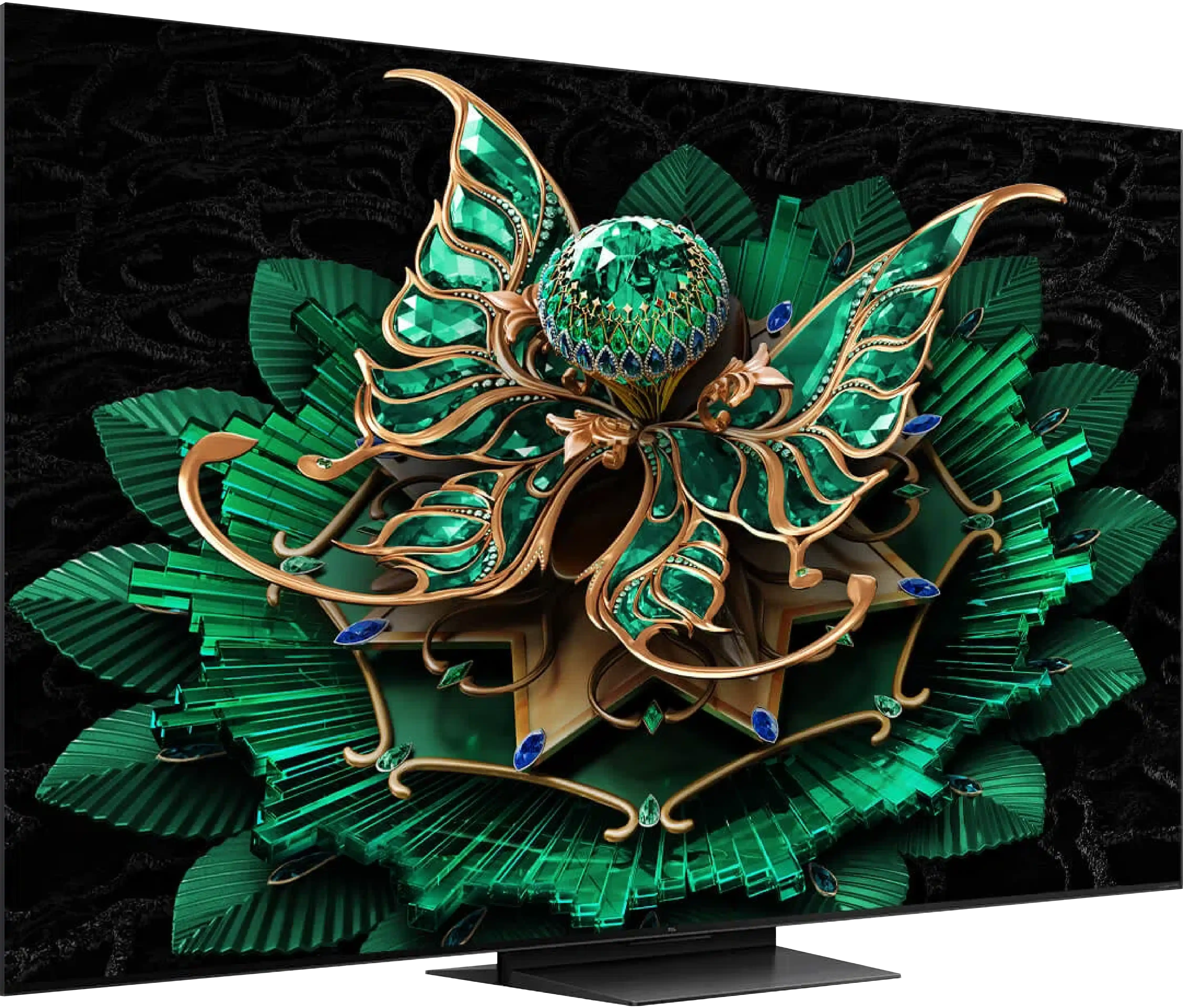

Panel type: LCD VA
Resolution: 3840x2160
System: Google TV
Model year: 2025
Complete the survey to find out the result

Panel type: LCD VA
Resolution: 3840x2160
System: Tizen
Model year: 2025
Complete the survey to find out the result

Overall rating
7.2
5.7
Movies and series in UHD quality
6.7
5.7
Classic TV, YouTube
6.5
5.6
Sports broadcasts (TV and apps)
6.6
5.3
Gaming on console
8.5
6.3
TV as a computer monitor
8.4
6.0
Watching in bright light
6.1
3.9
Utility functions
7.3
6.6
Apps
9.6
8.7
Sound quality
7.0
5.8
Complete the survey to find out what fits your preferences
Advantages
Very good black - VA panel with a large number of Mini-LED zones
High brightness in HDR - over 1000 nits
Excellent for gamers - HDMI 2.1, low input lag, VRR, ALLM, etc.
Good motion smoothness - 144Hz panel
Supports multiple HDR formats: HDR10, HDR10+, Dolby Vision
Google TV operating system with access to a vast array of applications
Pleasant sound from built-in speakers
Solid native contrast (VA Panel)
Vivid colours thanks to QLED filter
Low input lag (around 10ms)
Advanced and smooth Tizen operating system
Compact sleek design with Type-C charging
Disadvantages
Google TV can operate with minor stutters
No USB recording and PiP functionality
Very low brightness (only 250 nits in HDR)
Lack of many features for gamers including VRR and HGiG – the manufacturer promised something, but in the end, those features are simply not available
Lack of many classic "television" features e.g. recording to USB or PIP
No Dolby Vision
Average quality of digital image processing
Our verdict
The Samsung Q7F is the manufacturer's cheapest model from the QLED line, and it must be admitted that a few advantages can easily be specified here. After calibration, the colours look really good, and the additional QLED filter makes the hues more saturated than in typical budget LCD televisions. Additionally, it features a VA panel that offers quite decent native contrast. It is certainly not at the level of top-tier models, but it performs adequately for everyday viewing. However, the biggest plus is the Tizen system, which is Samsung's flagship offering. It operates smoothly, is feature-rich, provides access to a multitude of applications and add-ons, and at the same time allows for straightforward connection of the television to the SmartThings ecosystem and control of other devices in the home. And basically, this is where the list of advantages ends, as the longer you use the Q7F, the more apparent it becomes that this is a product that is significantly underdeveloped. It's not just about the panel itself with its low brightness and mediocre picture quality in HDR films, but also about the lack of features that typically worked flawlessly in Samsung models. The manufacturer claims the presence of VRR and HGiG, but in practice, they offer no benefit, making it difficult to recommend this television even to casual gamers. It also does not perform particularly well for regular television as the digital image processing is at best average, and the tone transition enhancement feature, which usually worked excellently in Samsung models, hardly functions here. The Q7F is a piece of equipment that can only be recommended to those looking for a television with two phrases on the box: “QLED” and “good Smart TV”. Everyone else receives a rather bland product that falls significantly short of competing even with other more budget-friendly options. It’s a pity because usually, the word "QLED" in Samsung meant something more than just an ordinary television.
TV appearance
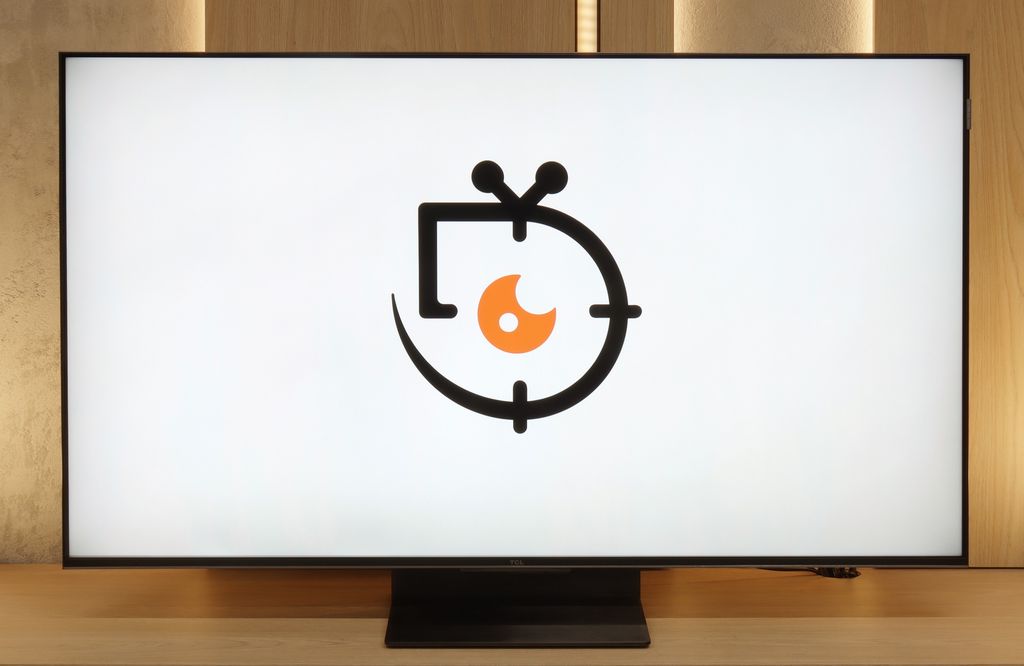
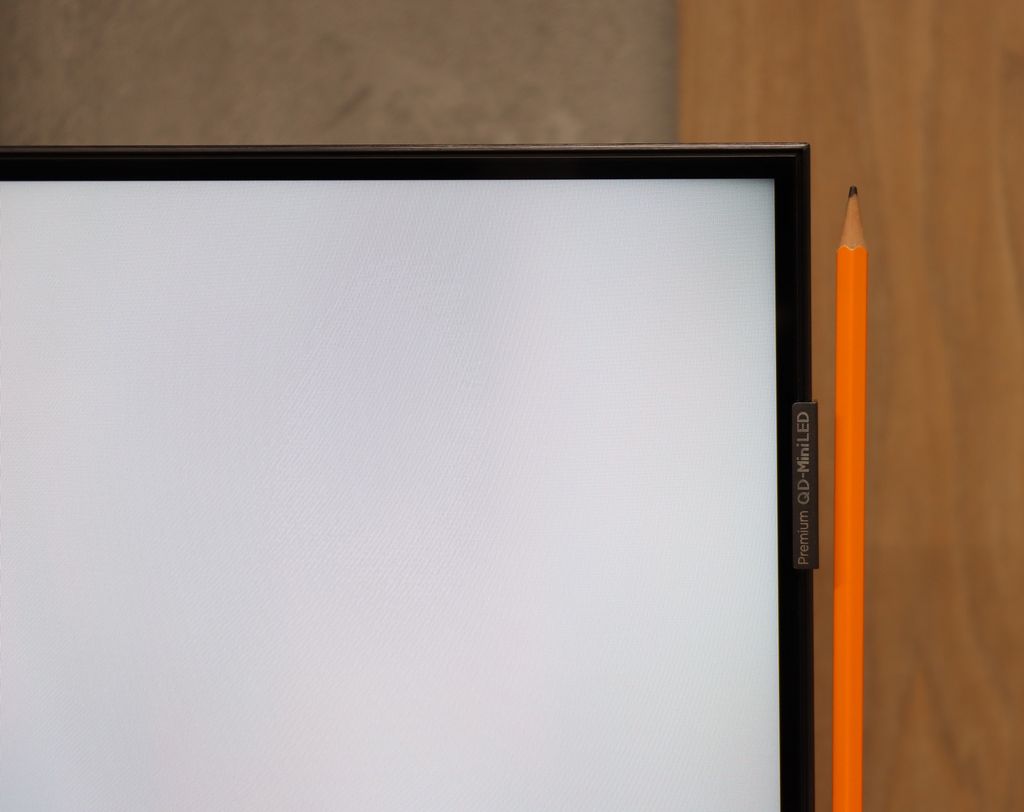
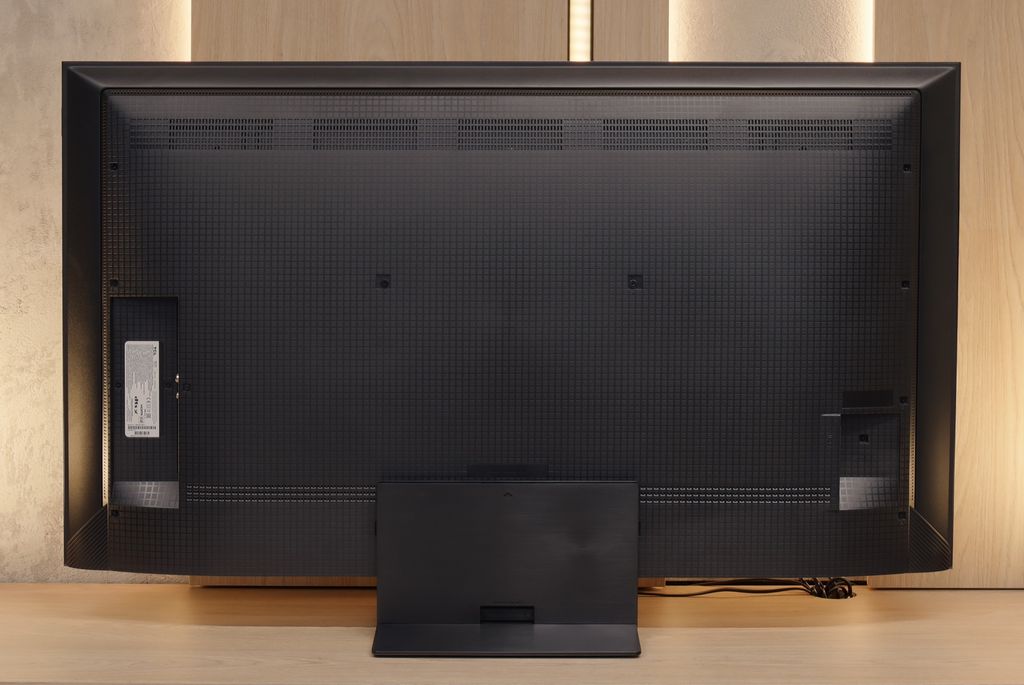
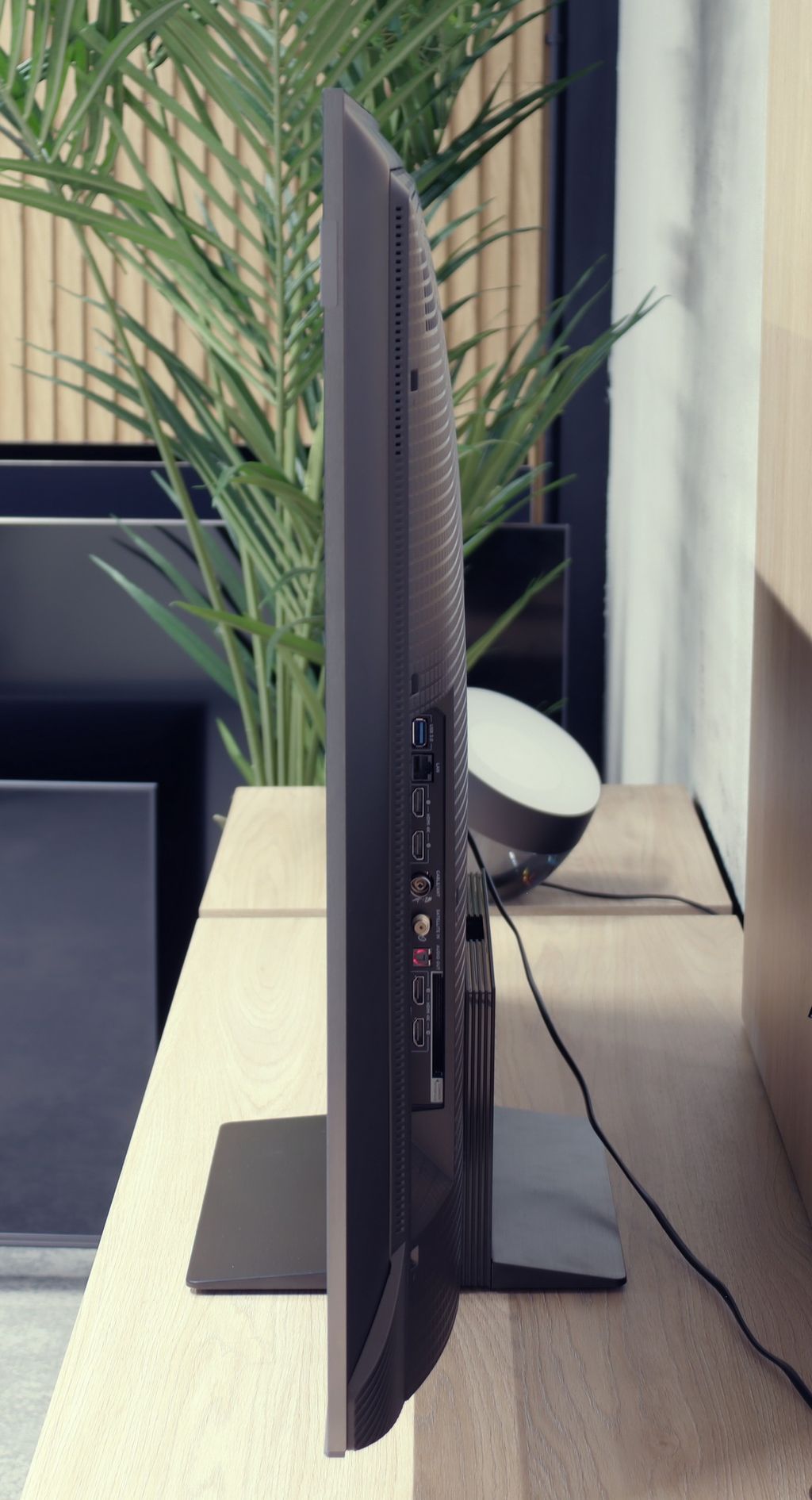




Contrast and black detail
7.1/10
4.7/10
Local dimming function: Yes, number of zones: 336 (14 x 24)
Local dimming function: No
Contrast:

Result
161,000:1

Result
18,750:1

Result
13,150:1

Result
6,300:1

Result
4,200:1

Result
2,850:1

Result
2,750:1

Result
3,300:1

Result
3,050:1

Result
2,750:1
Halo effect and black detail visibility:
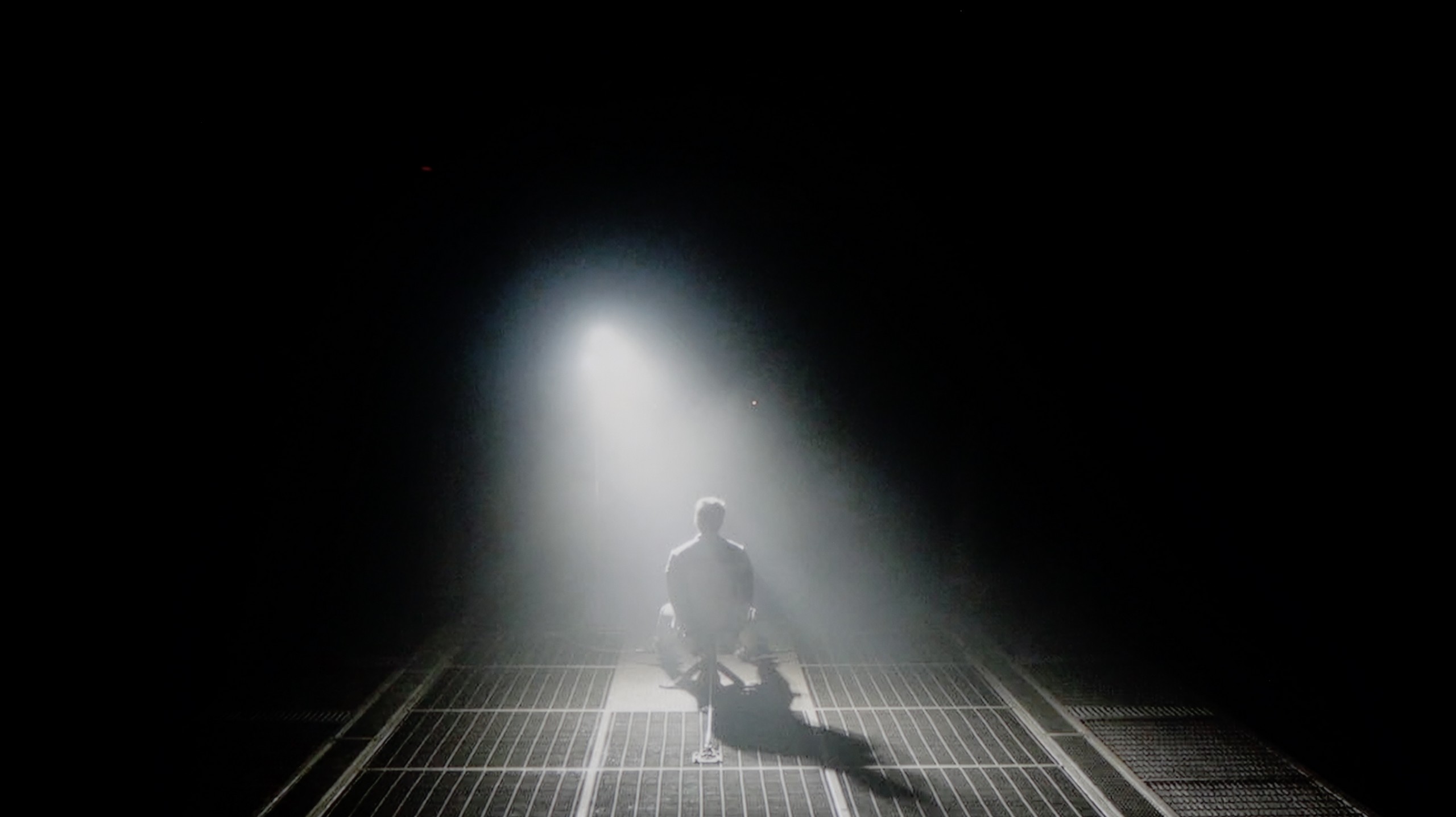

The 50-inch TCL C7K that we tested surprised us right from the start – it’s the smallest model in the series, yet it comes equipped with a VA panel with MiniLED backlighting and – attention – as many as 336 dimming zones. For comparison: many significantly larger televisions from higher tiers would be eager to boast such a number. Here we have it in the 50-inch version. Sounds promising, doesn’t it? So how does this translate into real movie-watching experiences? In the vast majority of tested scenes – very well. The contrast was high enough that it reached even six-digit values in measurements, which practically means very deep blacks and well-separated highlights. In scenes from films like The Revenant or Oblivion, the effect was impressive, matching the best LCD screens in this class.
However, not everything went perfectly. Despite the impressive number of zones, managing them was not always exemplary. In more complex scenes, where small light sources or a high level of detail appeared, the television had issues with the so-called halo effect (a glowing halo around bright objects) or overly aggressive dimming of the image. In such situations, contrast could either collapse due to overexposure of certain zones or, conversely – details in bright areas disappeared because the zones suppressed the light too much. Nonetheless, it is worth noting that in the vast majority of scenes, the contrast was more than satisfactory. And taking into account the size of the television and the price, the final effect will satisfy not just average users.
The Samsung Q7F in the tested size of 55 inches has a VA panel, which immediately translates to decent native contrast. Values around 3000:1 may not be record-breaking, as we know that panels with more than double the contrast are currently being produced, but it still performs much better than IPS or ADS panels, where black quickly fades into shades of grey or navy blue. Unfortunately, we do not find typical local dimming zones here, but the manufacturer has included something akin to global dimming – that is, dimming the entire screen in relation to the content. The effect? In most scenes, black appears rather solid, although during night viewing sessions, we will still see that it more closely resembles dark navy or grey than true pitch black. Overall, it's okay, but without fireworks – it's not spectacular, but it's also not a disaster.
HDR effect quality
5.4/10
3.7/10
Luminance measurements in HDR:

Result
1051 nit

Result
185 nit

Result
454 nit

Result
200 nit

Result
836 nit

Result
215 nit

Result
225 nit

Result
267 nit

Result
113 nit

Result
250 nit
Scene from the movie “Pan” (about 2800 nits)


Scene from the movie “Billy Lynn” (about 1100 nits)
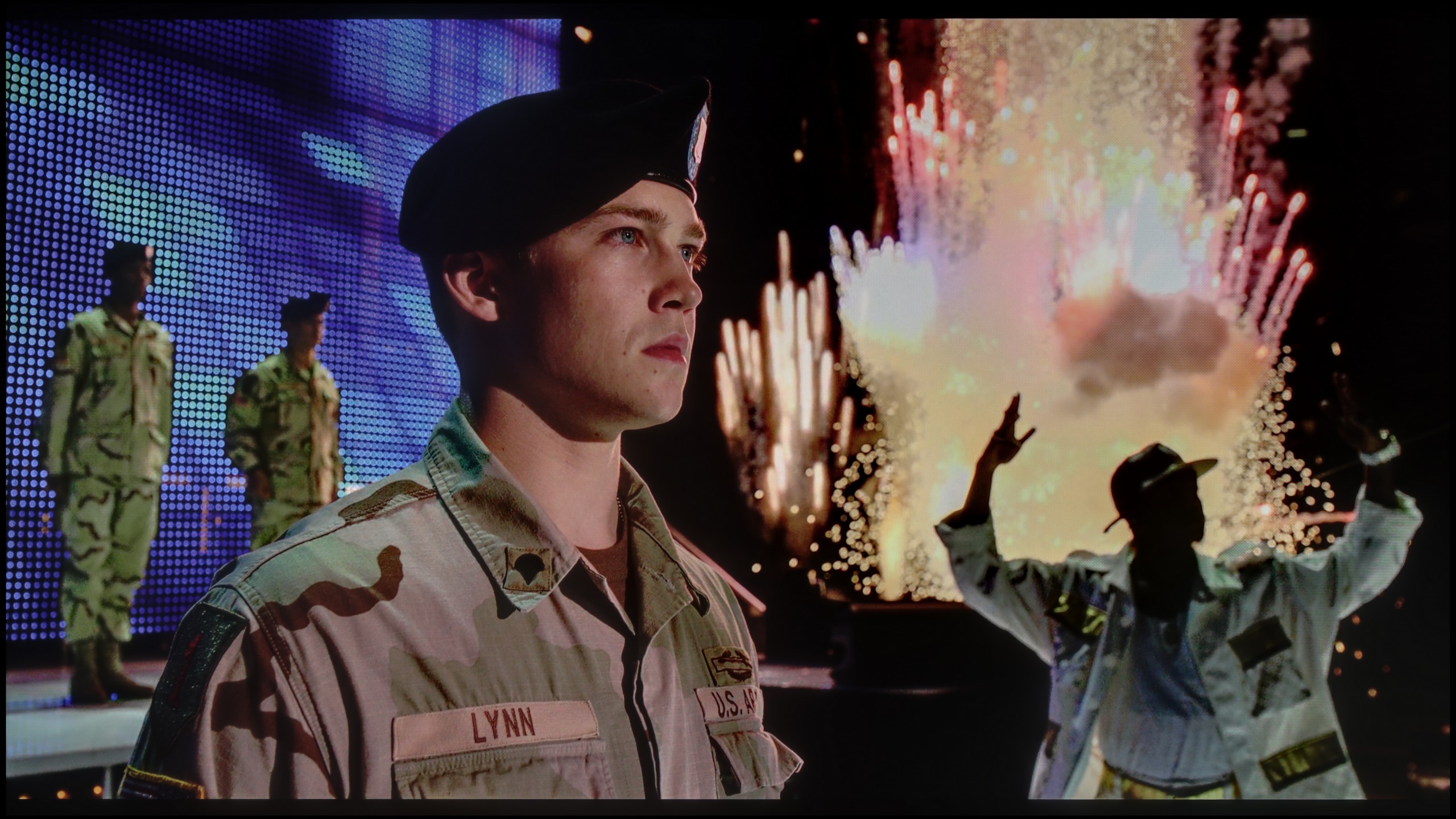

Static HDR10


Dynamic: Dolby Vision
Dynamic: HDR10+


HDR luminance chart:
Samsung Q7F
HDR luminance
TCL C7K / QM7K
HDR luminance
TCL C7K is one of the brightest MiniLED televisions in its price range. Under the best testing conditions, the screen managed to achieve over 1200 nits, resulting in impressive, at times almost blindingly bright scenes. And most importantly – this is not just a theory based on measurements. In practice, the brightest parts of films can shine with true cinematic grandeur. Fans of home HDR cinema should be truly satisfied.
The impression is excellent, especially in scenes with large areas of brightness – a white sky, explosions, sun reflections, or magical sunsets can surprise with an intensity of light that is rarely seen in this price range.
However, it gets a bit worse when more challenging scenarios appear on the screen, as described when discussing contrast – that is, images full of details, with small, bright elements on a dark background. In such cases, the C7K often decides to preserve black levels at the expense of brightness. An example? Scenes from the films Sicario 2 or Life of Pi, where small light sources (like a distant lantern) can become less visible, and details in the lights are simply dimmed or blend into the background.
For many viewers, this may be an acceptable compromise – as we achieve deep black levels and a pleasing plasticity of the image. Nevertheless, it is worth being aware that the visibility of small details in bright areas is not this model's strongest suit. It is simply a technological limitation that still exists – even with over 300 zones.
Unfortunately, the Samsung Q7F is not one of the brighter televisions, and this has a direct impact on the quality of HDR films. The peak brightness of the panel is just around 250 nits, which is definitely too low to speak of true cinematic experiences. In practice, the image in HDR content does not differ significantly from classic SDR, making it difficult to talk about any "wow effect" that usually accompanies us when watching such films. During tests of film scenes, the image simply looked dark, and the brightness almost always hovered around the aforementioned 250 nits. The worst performances were with shots that included small, intensely shining elements – the global dimming technique used reacted very aggressively in these cases, dimming the entire screen to maintain the effect of black. However, it is worth noting the presence of the QLED coating that expands the colour palette. For a budget QLED model, the Q7F performs quite decently here: the coverage of the DCI-P3 palette is about 93%, and BT.2020 reaches 70%. This means that, despite the low brightness, the colours can still look quite vivid and attractive.
Factory color reproduction
6/10
5/10
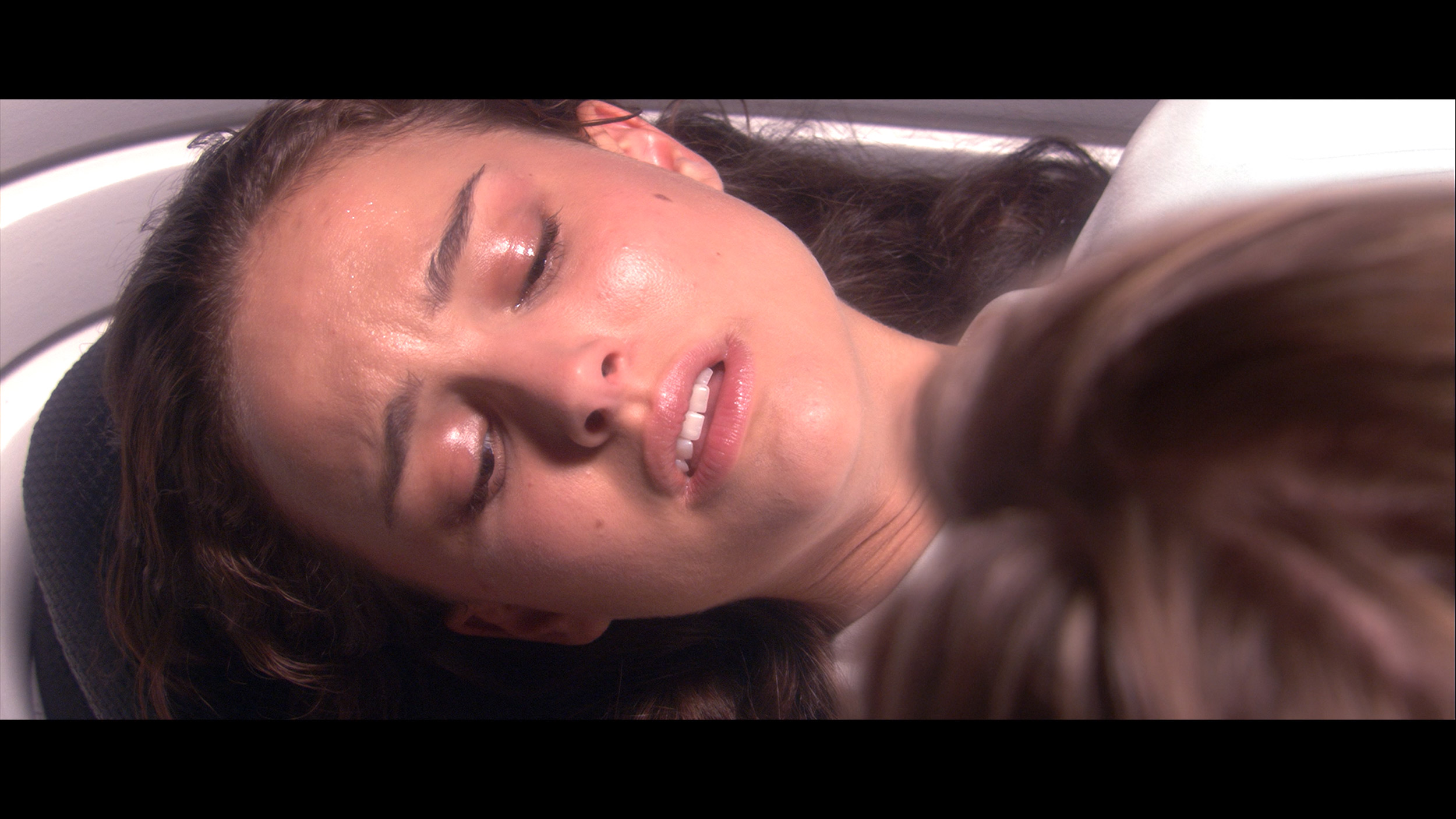
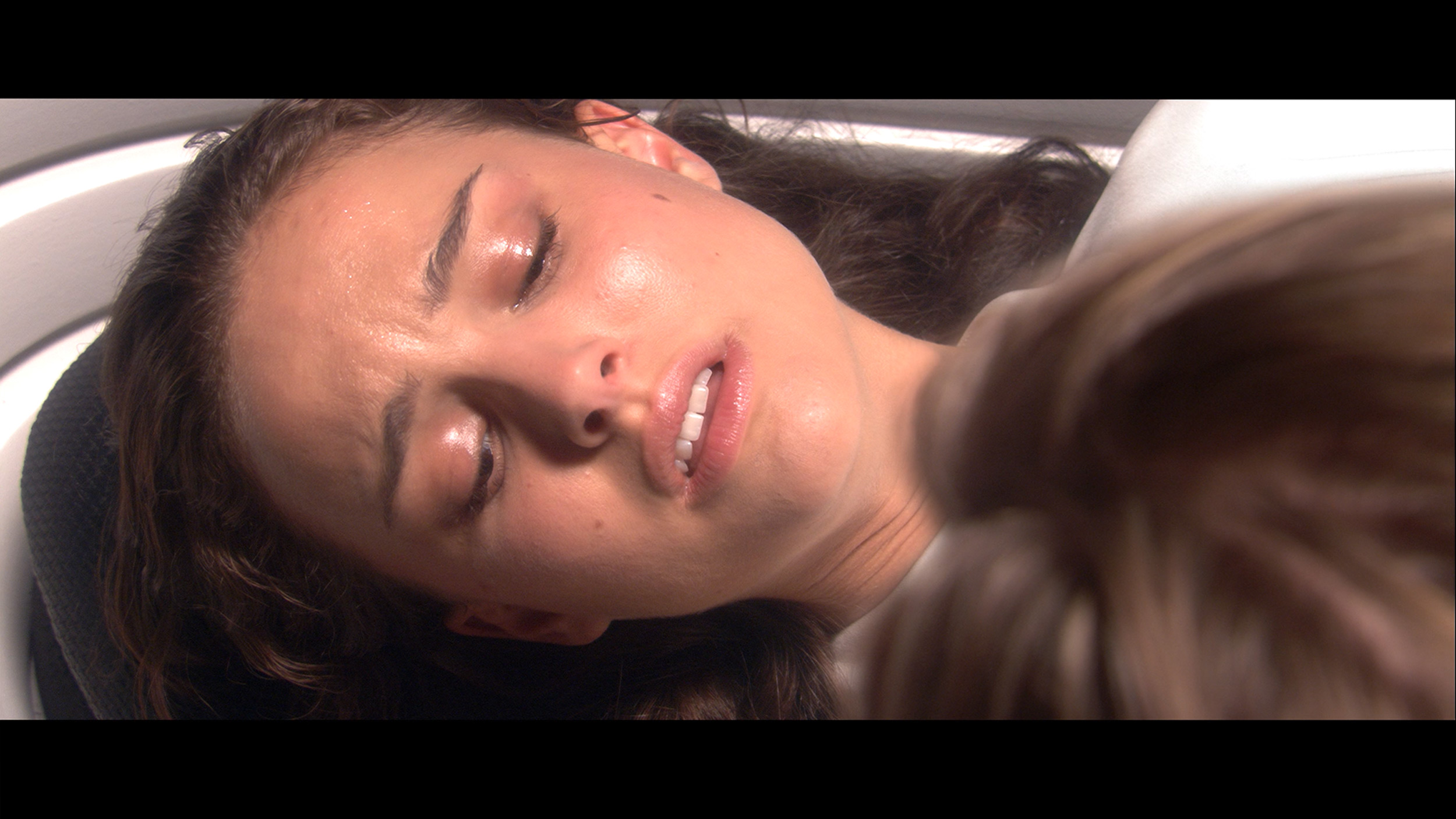
Factory Mode
After calibration


Factory Mode
After calibration
A new feature in TCL televisions for 2025 is the long-awaited Filmmaker mode, which until now has been found in most competing brands. This is great news, as this mode is considered to be the truest to the original vision of the creators and is often recommended by enthusiasts of good picture quality. Unfortunately, as is often the case, the mere presence of this mode does not guarantee perfection. The Filmmaker mode in the TCL C7K is not without its flaws. There can be criticism of the incorrect white balance, particularly a slight dominance of blue, which resulted in cool, somewhat greyish skin tones. But that was not the biggest issue. The main complaint was the excessive brightness exposure, which is clearly visible on the gamma and EOTF graphs. The image was simply too bright, at times even blown out, which affected not only the texture of scenes but also the overall viewing experience. Some details were simply lost, and the entire image looked as if someone had slightly overcooked the brightness slider. As always, we decided to check what could be extracted from this after calibration. And that’s where it started to get really interesting…
The factory colour accuracy of the Samsung Q7F is certainly not one of its strong points. In Filmmaker mode, which theoretically should be the closest to neutral, the issue with white balance immediately stands out. There is too much red on the screen, while blue is lacking. The consequences of this are very easy to notice – white, instead of being neutral, takes on warm, almost slightly orange tones. In the long run, this makes the entire image look somewhat unnatural, and bright areas of the scene may seem unrealistic. The problems become even more evident in HDR content. The graphs show that the television has significant errors in the Color Checker palette, which translates to visible inaccuracies in the actual image. Practically, this means that the colours are not presented as they should be. The Q7F also heavily manipulates brightness; darker elements are overly boosted, losing their cinematic quality, while bright parts may appear dimmed. As a result, the image seems flattened, and contrast, instead of helping to bring out details, only highlights its own limitations. This is particularly frustrating in HDR material, where every detail matters. In scenes where there should be a subtle play of light and shadow, the Q7F either oversteps by brightening too much or conversely – suppresses elements that should draw the eye. This causes the image to lose its depth, and instead of cinematic realism, we have a rather simplified effect.
Color reproduction after calibration
7.5/10
7.6/10
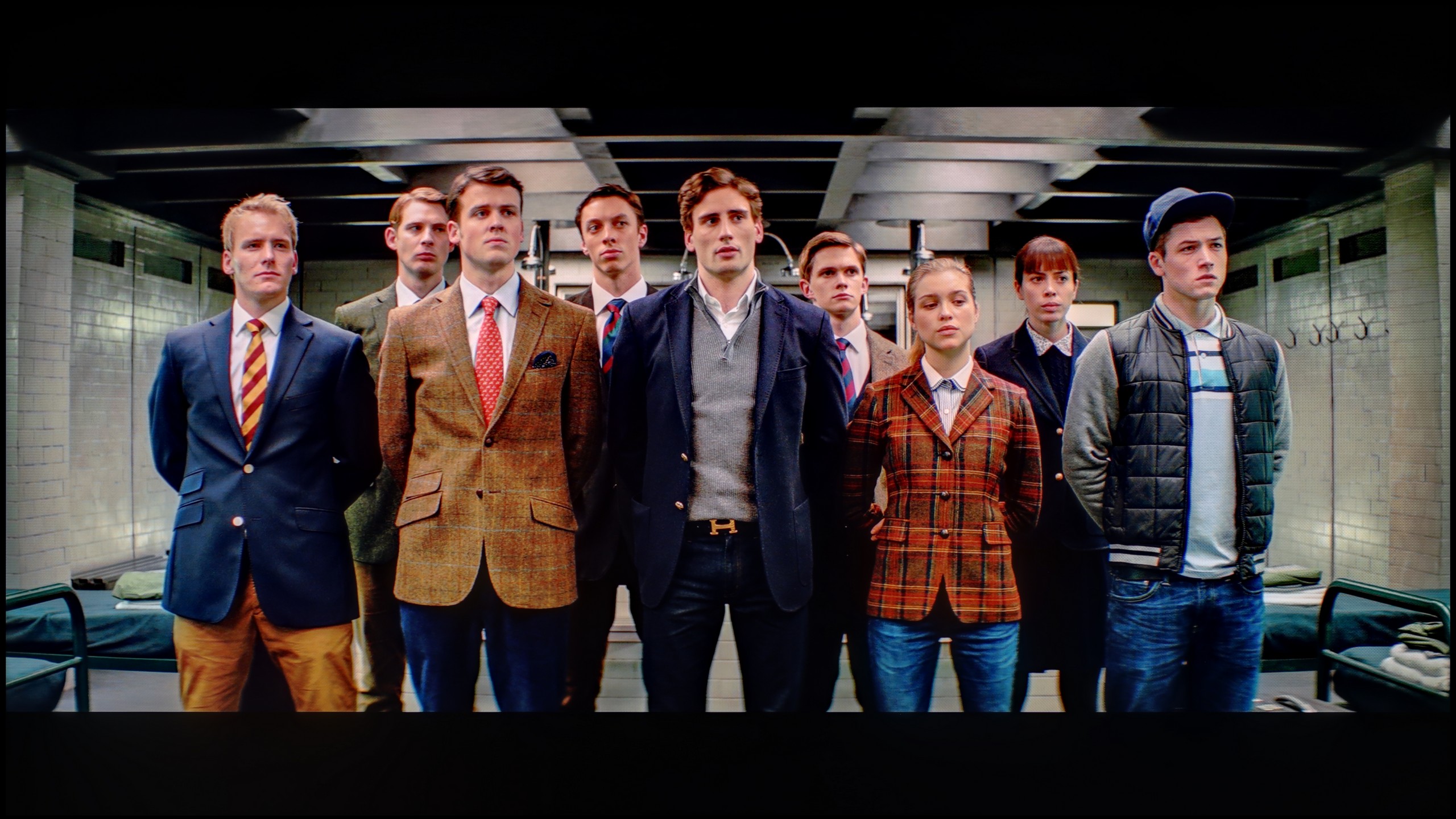



After calibration, the TCL C7K showcased itself in a really good light, especially when it comes to SDR content. We managed to precisely tune the white balance, colour gamut, and brightness characteristics to the point that colour errors on the ColorChecker palette dropped below a value of 2. For the uninitiated – this is nearly a perfect result, which means that the image is very close to what the creators intended. Unfortunately, the situation was worse with 4K HDR content. Although we managed to gently stabilize the white balance and correct its previous errors, it was still evident that the television has certain "MiniLED traits," especially in brightness management. When we checked how the C7K handled the EOTF curve on actual film scenes, rather than just on synthetic test patterns, it turned out that the screen still tends to slightly brighten the entire image. This impacts the overall experience – blacks lose some depth, and the image becomes less contrasty than it should be. Despite these minor shortcomings in HDR content, the overall reception of materials – especially in SDR – is truly very good. After calibration, the C7K can display an image that can compete successfully with much more expensive models. Good colour tuning, natural skin tones, and pleasant brightness make movie sessions and everyday viewing of content more than satisfactory.
After professional calibration, we managed to bring the Q7F into order – at least in terms of SDR content. The picture in this mode looks really good: the white balance has been set correctly, the colours appear natural, and errors in the colour palette have dropped to levels that are practically invisible to the eye. Gamma behaves exemplary, and the only minor drawback is a slight lightening of smaller elements, which results from the lack of local dimming. For everyday watching of television or films in standard quality, the Q7F performs surprisingly well.
It was significantly harder to tame HDR content. Despite adjusting the white balance, the television still heavily manipulates brightness, causing scenes to sometimes look unnatural – what should be subtly darker can be overly brightened, and bright areas of the picture can occasionally appear dimmed. The end result is better than in factory settings, but it is evident that the structural limitations of the Q7F do not allow for the full potential of HDR materials to be fully realised.
Smoothness of tonal transitions
8.6/10
9/10




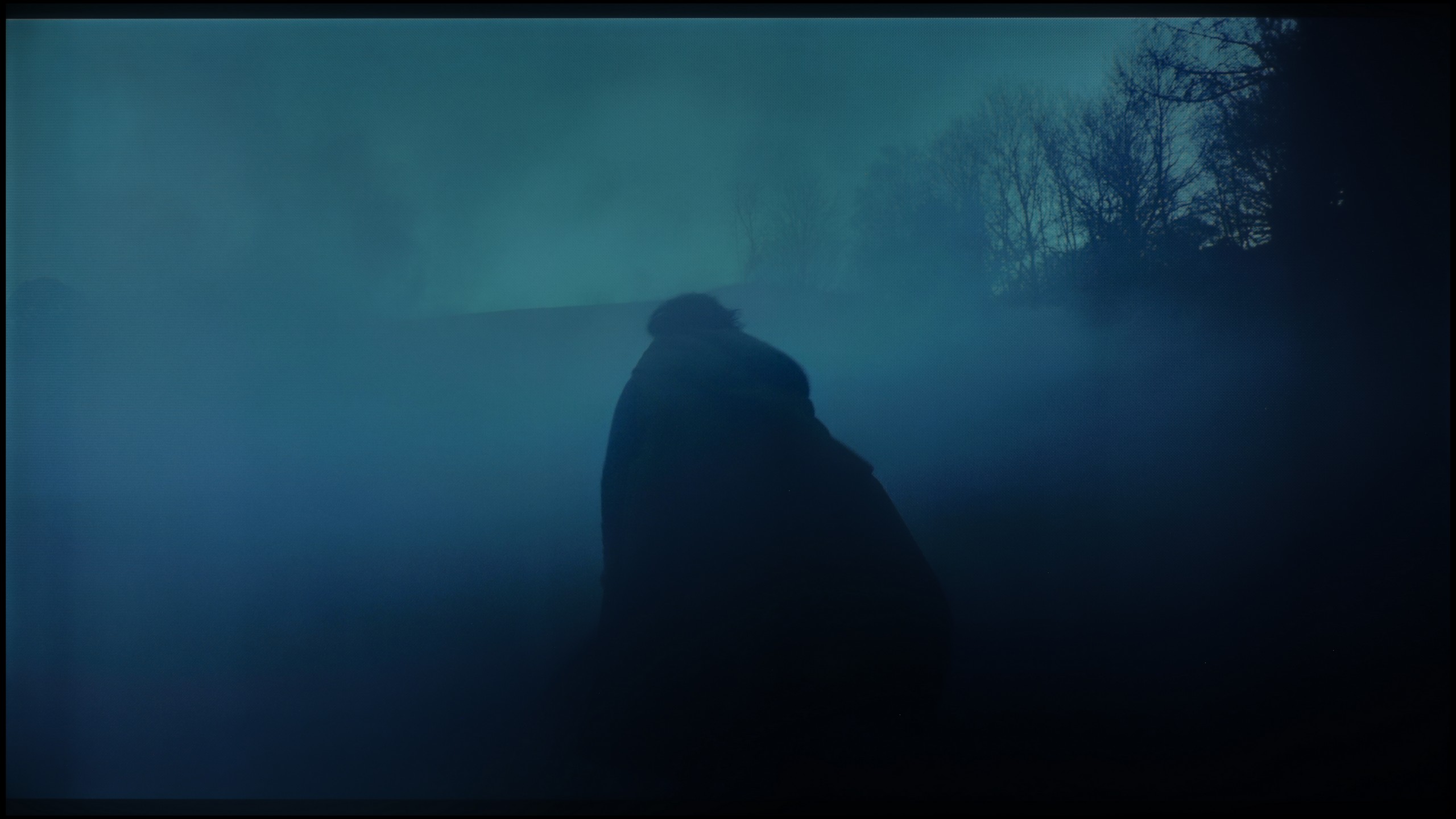







The TCL C7K handles colour gradation very well – in most of the tested scenes, tonal transitions were smooth, and colours blended together without visible outlines or the artificial "blot" effect. In everyday use, it's hard to find anything to criticise – the picture looks natural, without annoying transitions or digital artifacts. Certain limitations only arise in very dark tones – particularly in a heavily muted grey palette, where the television may struggle to reproduce the ideal gradation. But this is absolutely understandable, as even many significantly more expensive models in this regard simply falter. Fortunately, these situations are rare and do not significantly impact the overall impression.
The fluidity of tonal transitions in the Q7F is really quite good. The gradients are smooth, without strong stair-stepping or artificial divisions that can be quite noticeable in cheaper televisions. Even in more challenging scenes, such as the one from The Revenant or the red shot with the actor swimming in water, the image maintained quality and simply looked good. If someone were to look very closely, they might notice slight imperfections in extremely demanding moments, but they are subtle enough that most people won't even notice them. For this price range, the Q7F performs surprisingly solidly in terms of gradation, and it's hard to find anything significant to criticise.
Image scaling and smoothness of tonal transitions
5.5/10
4.5/10
Smooth transition function
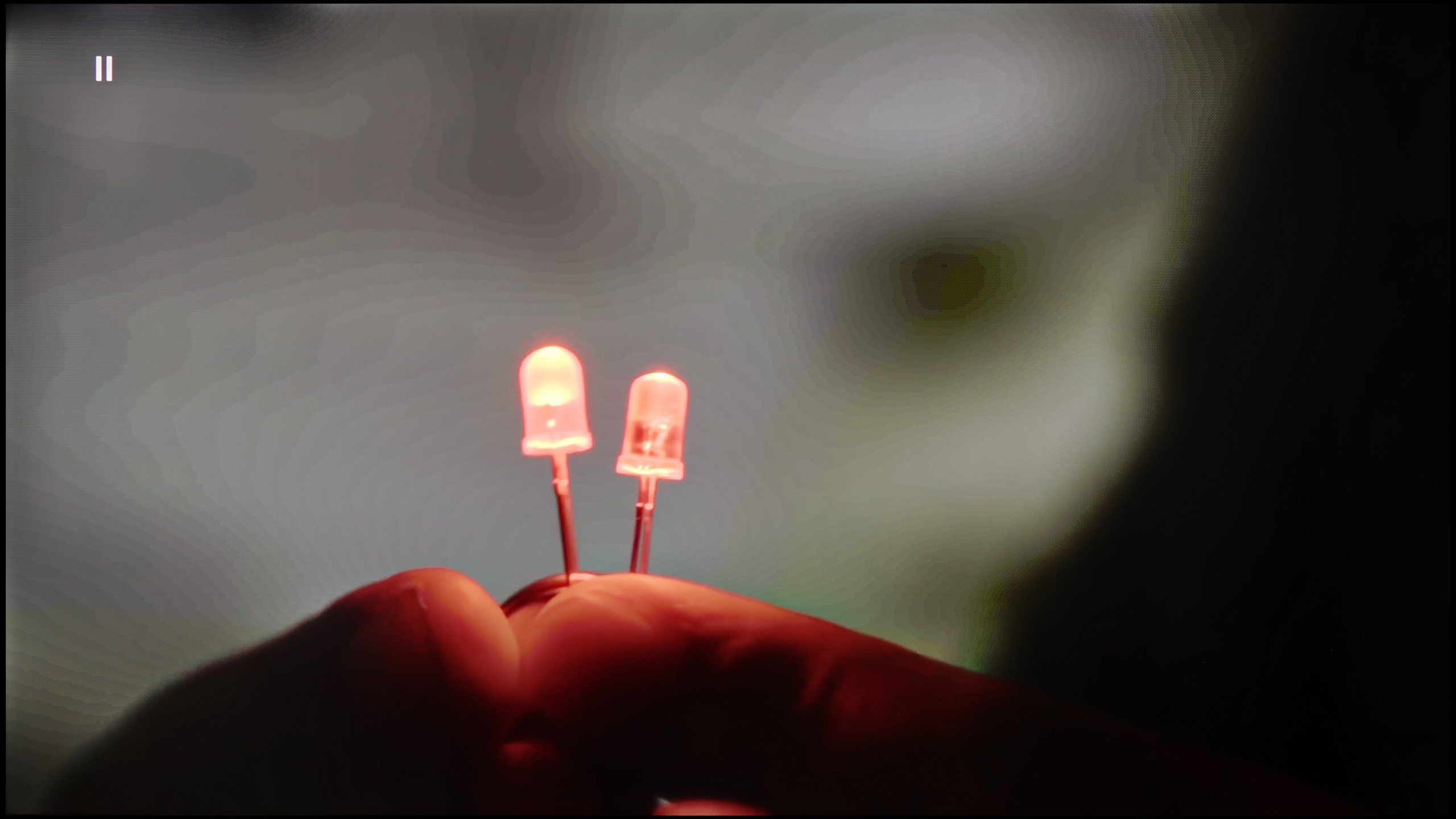

Image without overscan on the SD signal


TCL C7K is equipped with a feature that, according to the manufacturer, is meant to smooth out unwanted colour transitions – a sort of rescue for less successful tonal shifts. It is called "Gradual Smoothing" and… well, it sounds ambitious, but in practice it works very poorly. Regardless of whether we set it to a low or high level, the difference is minimal. Worst of all, the feature can cut out elements from the picture that should be there. Fortunately, film grain remains untouched, so at least it doesn’t smooth everything indiscriminately, but still – it’s better to simply turn this option off.
When it comes to scaling lower resolution content, it is somewhat better. SD and HD materials look quite decent, although at times we had the impression that the image loses sharpness and becomes too soft – as if something took away its definition. Fortunately, with very low sources (e.g. 576p), there was no overscan effect, meaning the picture was not artificially cropped – everything fit on the screen as it should.
Upscaling and digital image processing on the Q7F is a bit of a sine wave. On one hand, we have really nice upscaling – weaker sources look better than one might expect. The image becomes clearer, sharper, and even older films or terrestrial television perform adequately. Samsung has been strong in this area for years, and the Q7F confirms that. On the other hand… there are some issues. The television has a problem with overscan – part of the image is simply cut off, and it doesn't look very elegant. Additionally, we were let down by a feature called "noise reduction", which should improve the smoothness of tonal transitions in weaker materials. In other Samsungs, it works relatively well, but here it makes practically no difference – the banding in gradients is still there. It's a bit of a shame, as one could have expected more from a model that is aimed at users looking for a display for SDR content.
Blur and motion smoothness
8.1/10
5.5/10
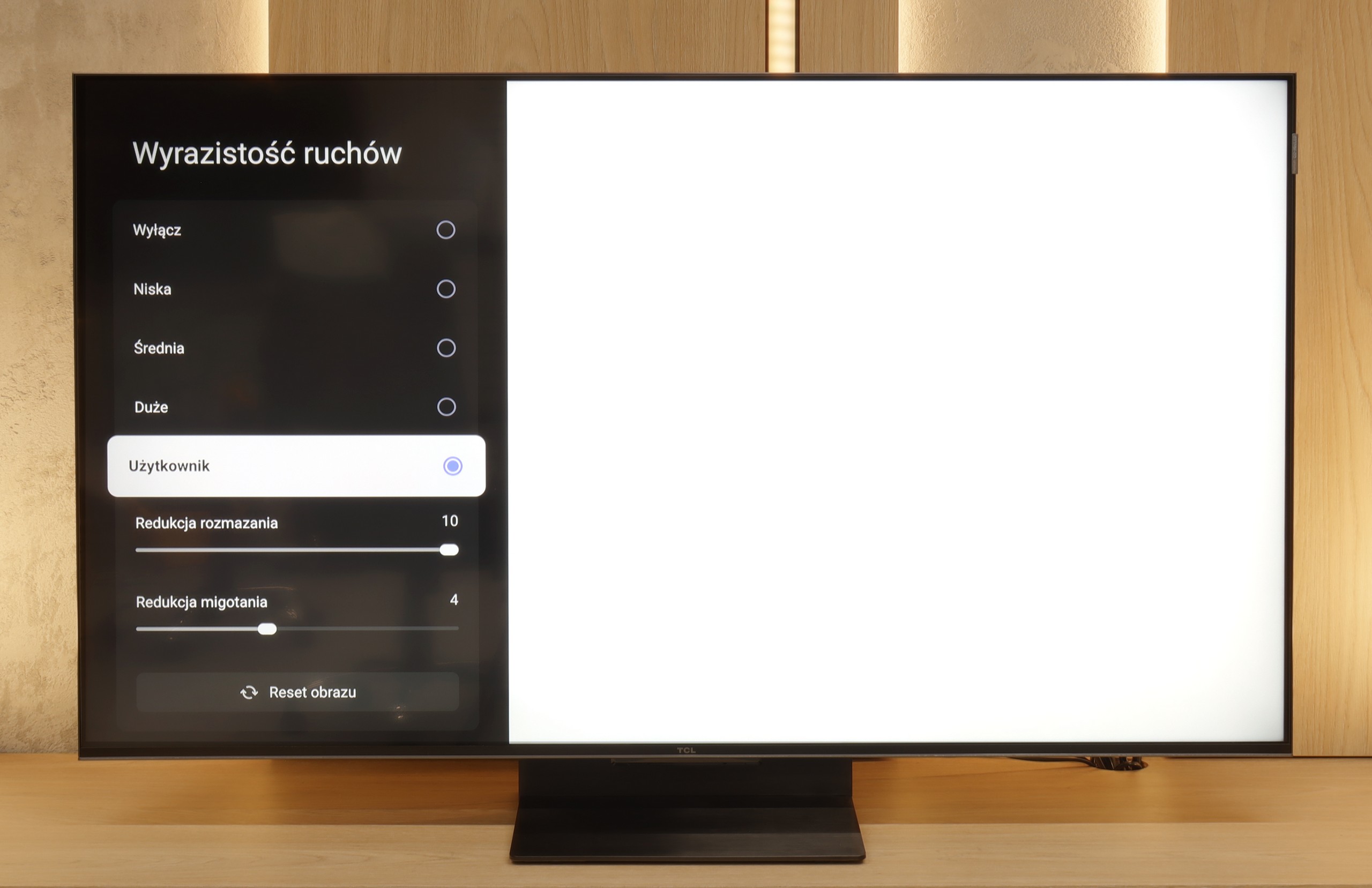

Blur (native resolution, maximum refresh rate):

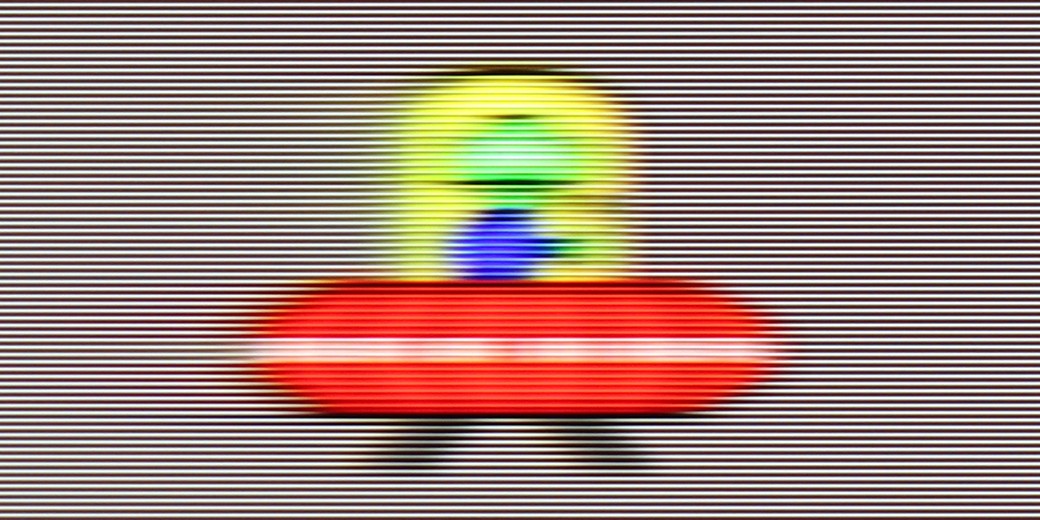
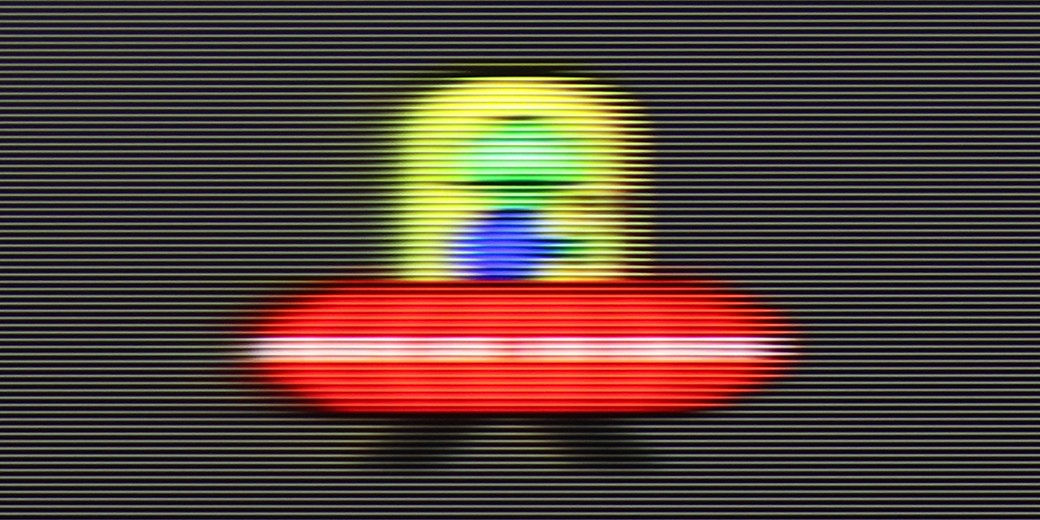



Blur (BFI function enabled):



Image flickers in this mode



Smużenie (4K 144Hz):



Smużenie ():
The TCL C7K handles motion fluidity really very well. The matrix used in it offers a refresh rate of 144 Hz, which in itself suggests that this television is more than just a regular "60 Hz" panel. Furthermore – if we connect the C7K to a computer and set the resolution to Full HD. But we'll write more about this in the paragraph about gamers and PC collaboration. Returning to everyday use – both sports and films look very good here. Thanks to the fast panel and well-functioning motion smoothing, the C7K is great for watching matches, but also for movie screenings. In the menu, we find two sliders – motion blur reduction and flicker reduction – which allow us to adjust the fluidity effect to our own preferences. At lower settings, we get a more cinematic effect, with slight stuttering motion. At higher settings – the picture becomes more theatrical, fluid to the point of excess. Everyone has their own preferences – anyone can set it to their liking.
Ghosting and motion smoothness in the Q7F are probably the most budget-friendly elements of this television. The 60 Hz panel makes itself known, with noticeable ghosting, especially in dynamic scenes, and it's rather difficult to regard this model as equipment designed for watching sports or playing fast-paced games. In tests with the little green man, a long trail was left behind, similarly to how a ball in a football match would leave streaks.
On the plus side, the presence of motion smoothing must be acknowledged. In films, it actually makes a difference – especially since most material is recorded at 24 frames per second. Here we can decide whether we prefer a more "cinematic" image, with slight judder typical of cinema, or a smoother, more "television" approach. This part works quite well and helps to improve the viewing experience for series and films.
Console compatibility and gaming features
9.8/10
3.3/10
- ALLM
- VRR
- VRR range48 - 144Hz
- Dolby Vision Game Mode
- Correct implementation of HGIG
- 1080p@120Hz
- 1440p@120Hz
- 4K@120Hz
- Game bar
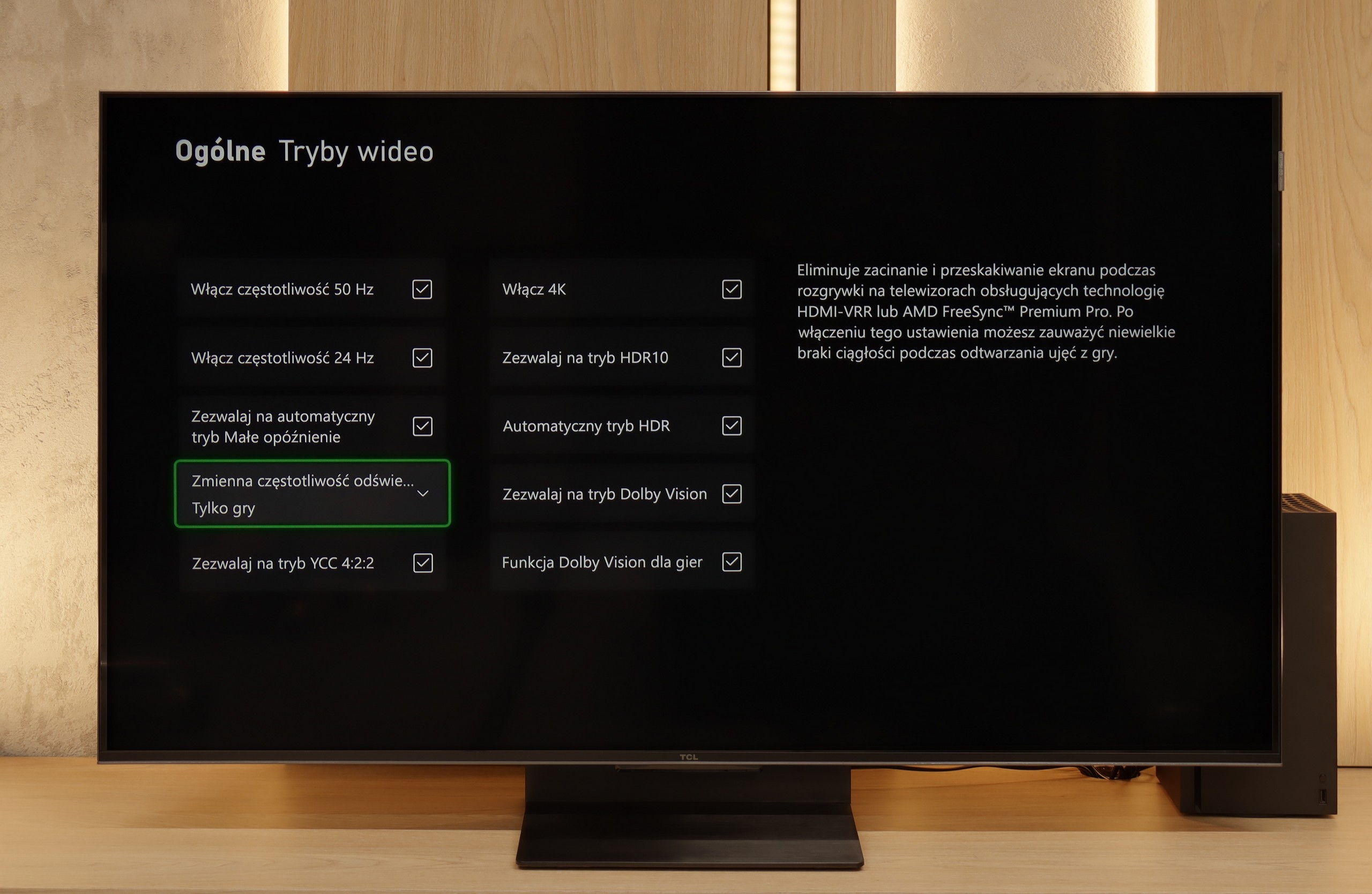

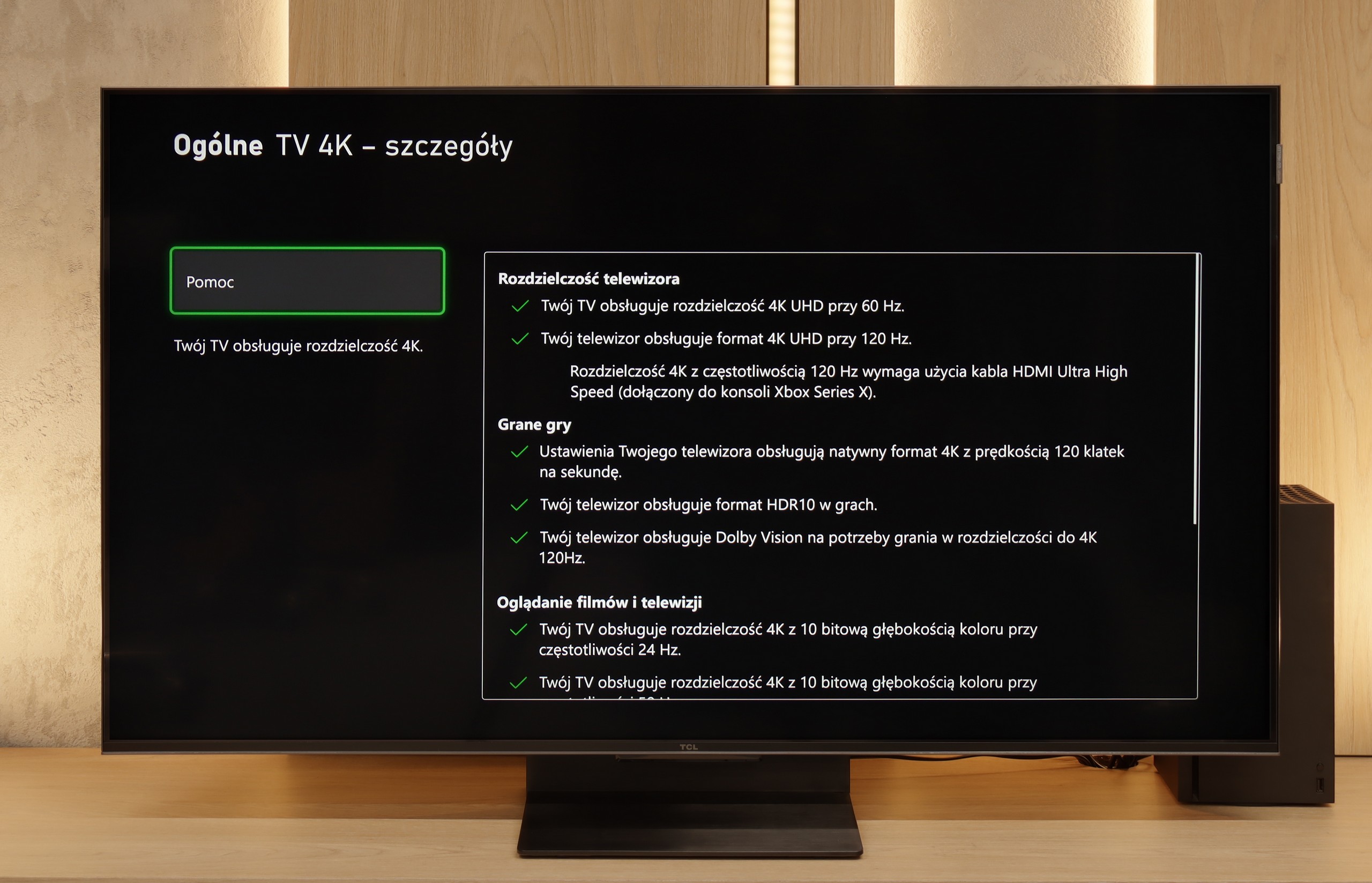

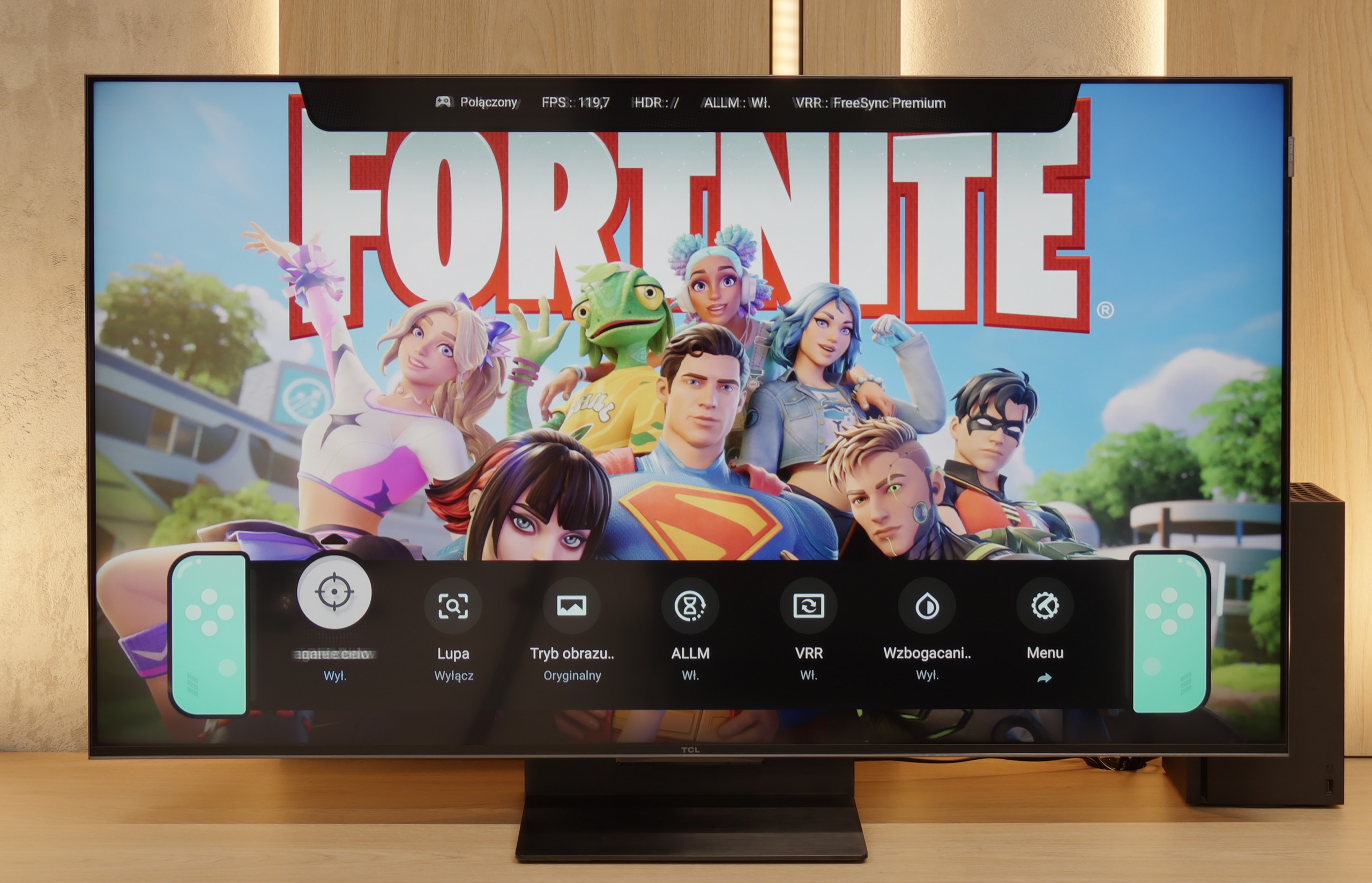

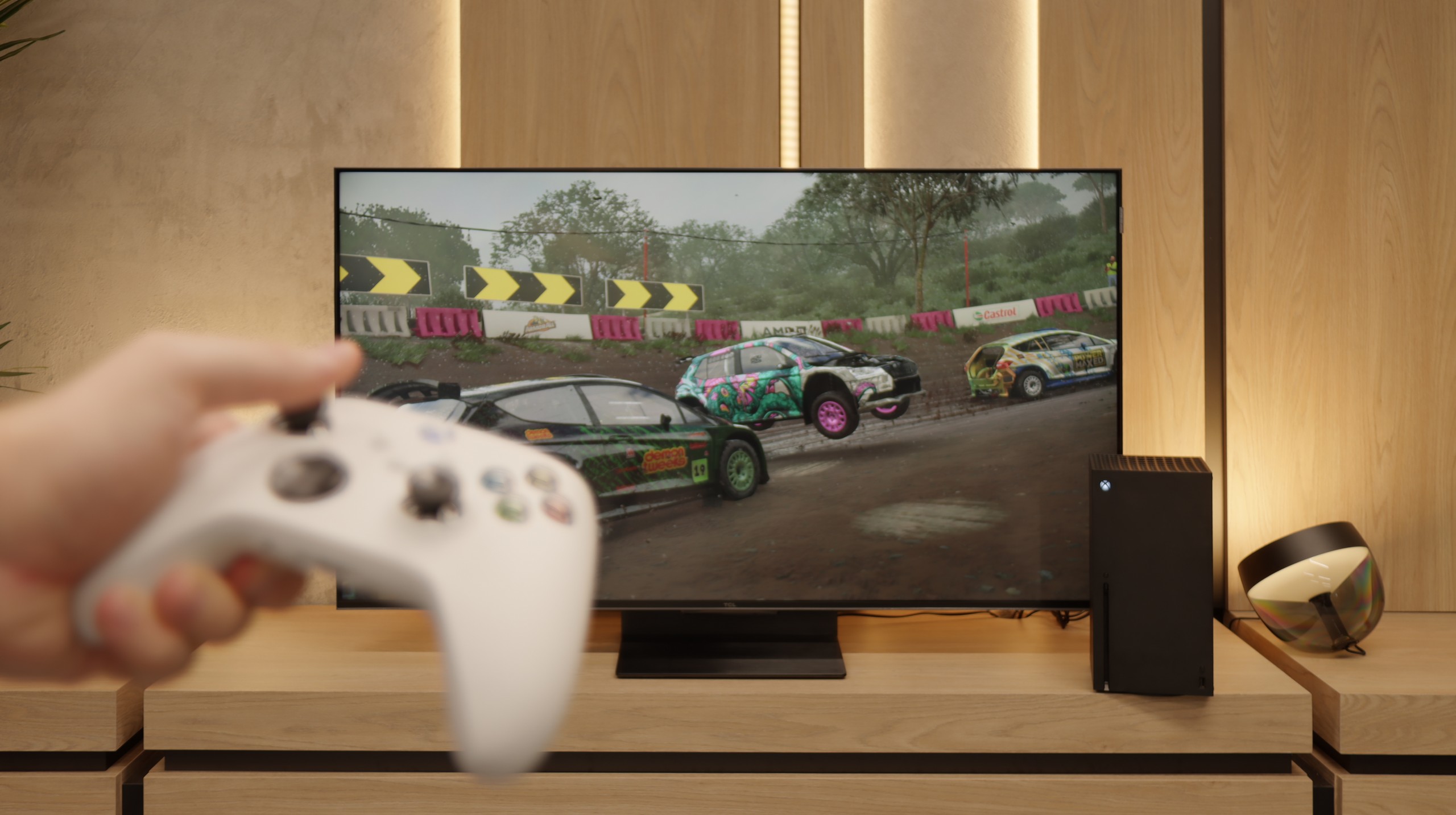

The TCL C7K is a television that on paper appears to be the dream equipment for gamers – and most importantly, it holds up in practice too. To start with good news: there are two full-bandwidth HDMI 2.1 ports, so we can easily connect both a console and a computer, taking advantage of all their capabilities. The panel itself supports a refresh rate of 144 Hz, which gives a significant advantage in dynamic games. There is also a complete set of gaming features: VRR (variable refresh rate), ALLM (automatic low-latency mode), and support for Dolby Vision in games. There is also the HGiG mode, which allows for HDR effects consistent with the creators' intentions. GameBar, an information bar for gamers. It works quickly, looks clear (like a Nintendo console👌), and shows what matters most: the current frame rate, VRR status, and even HDR parameters.
Features for gamers in the Samsung Q7F is a topic that evokes quite a lot of mixed feelings. On the one hand – no sensible person expected miracles here, as it is after all a 60 Hz television and it was clear from the start that it would not be a device for squeezing the maximum out of a console or PC. On the other hand, since the manufacturer promised specific solutions in promotional materials, it is natural that we wanted to see them in practice. At the outset, it’s quite decent. The automatic game mode (ALLM) works, so there’s no need to manually fiddle with the settings; the console automatically switches the television to low-latency mode. Additionally, we have the Game Bar, which looks impressive and allows you to check a few basic parameters without leaving the game. And this is where the good news ends.
The biggest problem with the Q7F is VRR, or rather its absence. Yes, an appropriate icon appears in the menu, and you can even see it in the Game Bar, but throughout the entire test, the feature remained inactive and could not be enabled in any way. The situation with HGiG is even more painful; this option was indeed available at the beginning, but after a software update, it completely vanished, which is simply unprofessional. Therefore, the Q7F is only suited for the absolute basics. Of course, you can turn on the console, play some calmer titles, and enjoy low input lag, but if someone is counting on more advanced features that the manufacturer promised, they will be disappointed. This is not a television to buy with gaming in mind, and it's better to be aware of that before making a purchase.
Input lag
9.7/10
10/10
SDR
HDR
Dolby Vision
When it comes to delays, the C7K gives no reason for complaints. In games at 120 Hz, input lag is around 10 ms, which means the television responds really quickly. And interestingly – even in Dolby Vision mode, the result is very similar, which is not always the standard. Good job, TCL. At 60 Hz, the lag does increase a bit, but that's completely normal and affects virtually every television with a refresh rate of 120Hz and above. The most important thing is that everything still runs smoothly and there’s no feeling that something is not responding to our actions.
Input lag on the Samsung Q7F is really good for a television with a 60 Hz panel. Measurements showed values below 12 ms, which means that for regular gaming on a console, this model is more than sufficient. Of course, it is not on the level of high-end 120 Hz screens, which can go as low as 6–7 ms, but in everyday practice, it is hard to talk about noticeable delay. In this respect, the Q7F does not fall behind its competitors in its segment and can easily be considered a safe choice for casual or sports gaming. At least in this regard.
Compatibility with PC
8.4/10
6/10
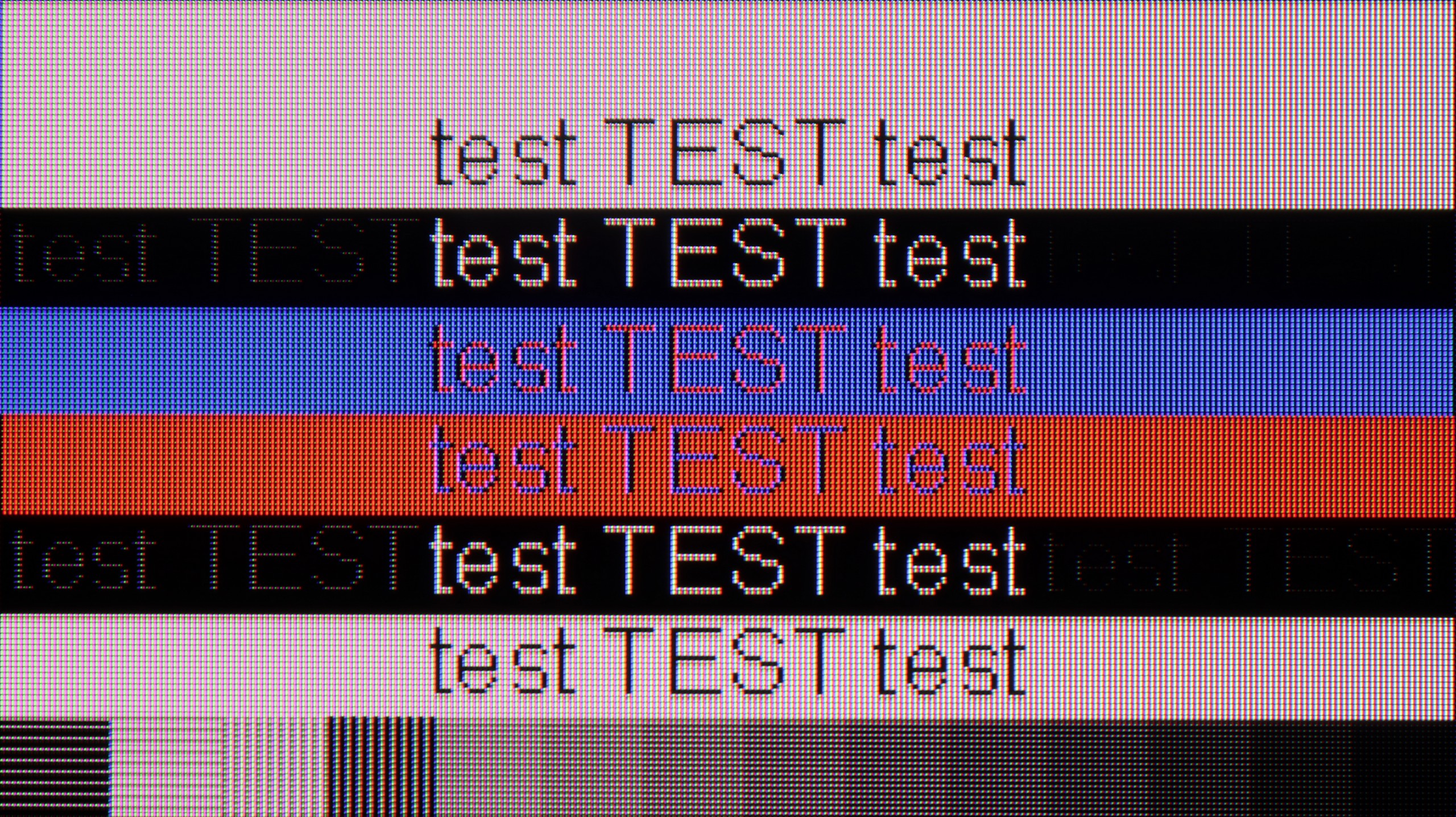

If we are going to connect the C7K to a computer – especially for gaming – there is definitely a lot to play for. We have 4K at 144 Hz, which already sounds great, but if we lower the resolution, the television can even display up to 280 Hz. In e-sports, where every fraction of a second counts, this really makes a difference. On top of that, there is support for G-Sync and FreeSync, so regardless of which graphics card we have – the image will be smooth, without any stuttering or tearing.
However, if we plan to place the C7K on a desk and use it like a monitor, it’s a bit less "rosy." Yes, it supports chroma 4:4:4, so fonts should be sharp, but with very dark letters, there is slight blurriness and dimming of the edges. This is not something that immediately stands out during gaming or watching, but when working with text – it can be distracting. In everyday use – it’s probably nothing to worry about, but if we plan to place a 50-inch screen a meter from our face, it’s worth keeping this in mind.
Collaboration with a PC on the Q7F is decent, although it is not a television that will satisfy the most demanding users. Fonts are displayed clearly and sharply, so it is perfectly fine to work on it – especially for daily office tasks or browsing the internet. With thin letters, one can notice slight shadowing, but it is not something that interferes with normal use. In a smaller size, the Q7F can indeed work as a computer screen, although one must remember its limitations. The lack of variable refresh rate means we cannot use G-Sync or FreeSync, and 60 Hz practically closes the door to more demanding PC gaming. For work and light usage, it will be okay, but for serious gaming, it is definitely better to look for something higher in Samsung's offering.
Viewing angles
3/10
3.5/10
There are no surprises here – the C7K has classic viewing angles for a VA panel. That is: sitting directly in front – it’s excellent. The colours look good, the contrast is strong, everything is in place. But just shifting slightly to the side and it starts to get worse – the image loses saturation, blacks turn grey, and the overall impression diminishes a bit. So, if we plan to watch together with a few people or have a sofa that takes up half the living room – it’s worth seating everyone a bit more centrally. You can watch from the side, but don’t expect miracles – it’s simply a characteristic of VA panels.
The viewing angles on the Q7F are simply poor – typical for a VA panel. Just sitting slightly to the side immediately shows that the image loses quality. Colours fade, contrast clearly drops, and blacks start to resemble grey more than anything deep. This is a television that is definitely best viewed head-on, and any wider viewing angle comes with compromises.
TV efficiency during daytime
6.1/10
3.9/10
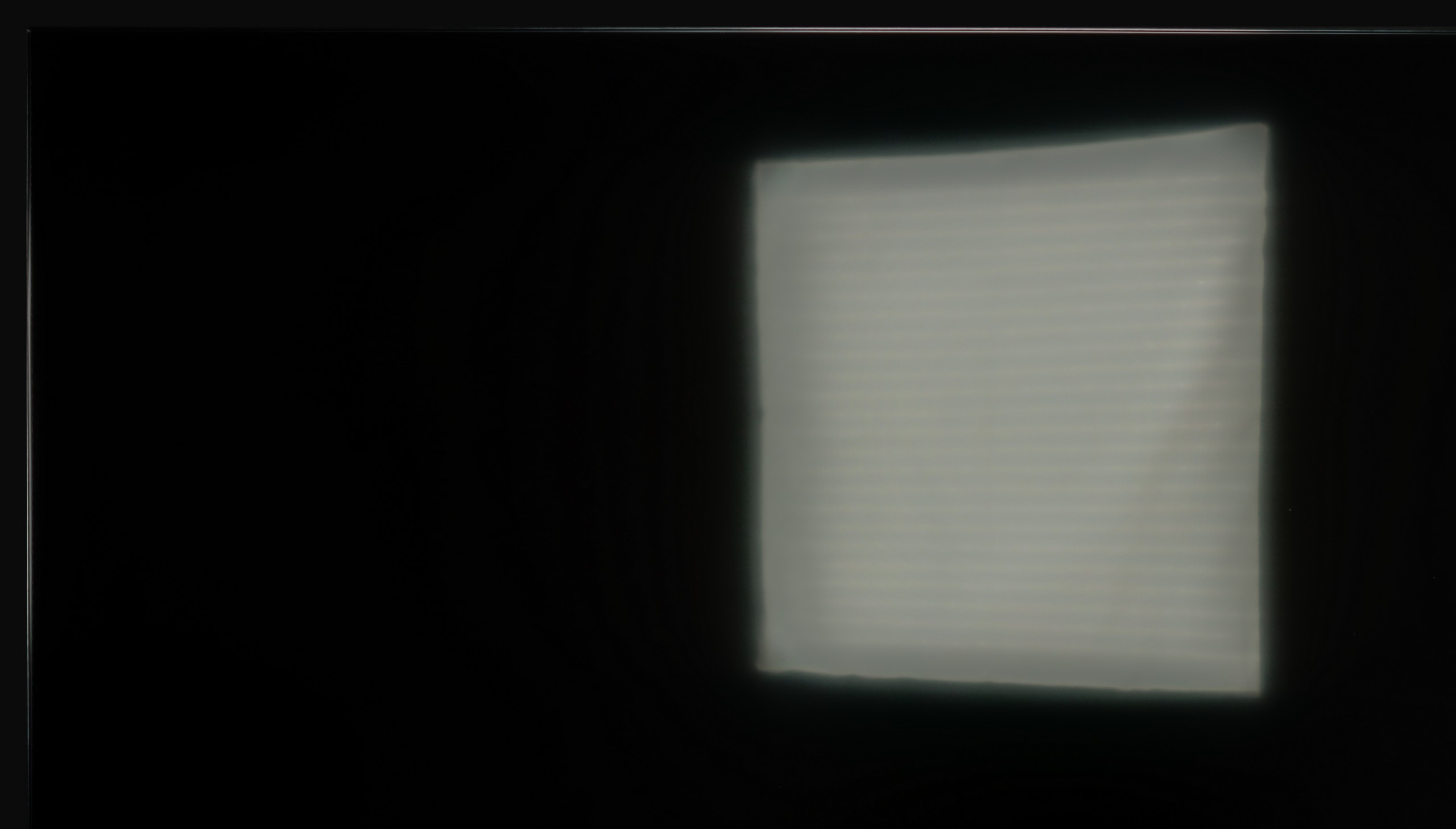



Matrix brightness
Average luminance SDR
Samsung Q7F: 237 cd/m2
TCL C7K / QM7K: 475 cd/m2
Fortunately, the TCL C7K performs quite well in bright rooms. The applied panel has a satin finish that effectively suppresses reflections, which means we don't have to worry about lamp or window reflections even on sunny days. Importantly, the colours maintain their intensity and do not wash out, as can happen with weaker matte panels. In terms of brightness, the average for content like YouTube or regular television is slightly below 500 nits. This is not a record-breaking result – for example, the MQLED85 (C765) performs better in this regard. However, for everyday viewing during the day, it should work without major issues, provided we do not plan to place it opposite a south-facing window without curtains.
The performance of the Q7F during the day unfortunately does not impress. Due to its low brightness, the screen quickly capitulates in very sunny rooms. It is therefore hard to recommend it to those who plan to watch television in a bright living room with large windows. In moderately lit rooms, it still performs adequately, but in bright light, the picture loses clarity. Additionally, the fact that the panel does not always effectively handle glare means reflections can be distracting during the day. This is more of a screen for evening viewing rather than for daily sessions in full sunlight.
Details about the matrix
Subpixel Structure:
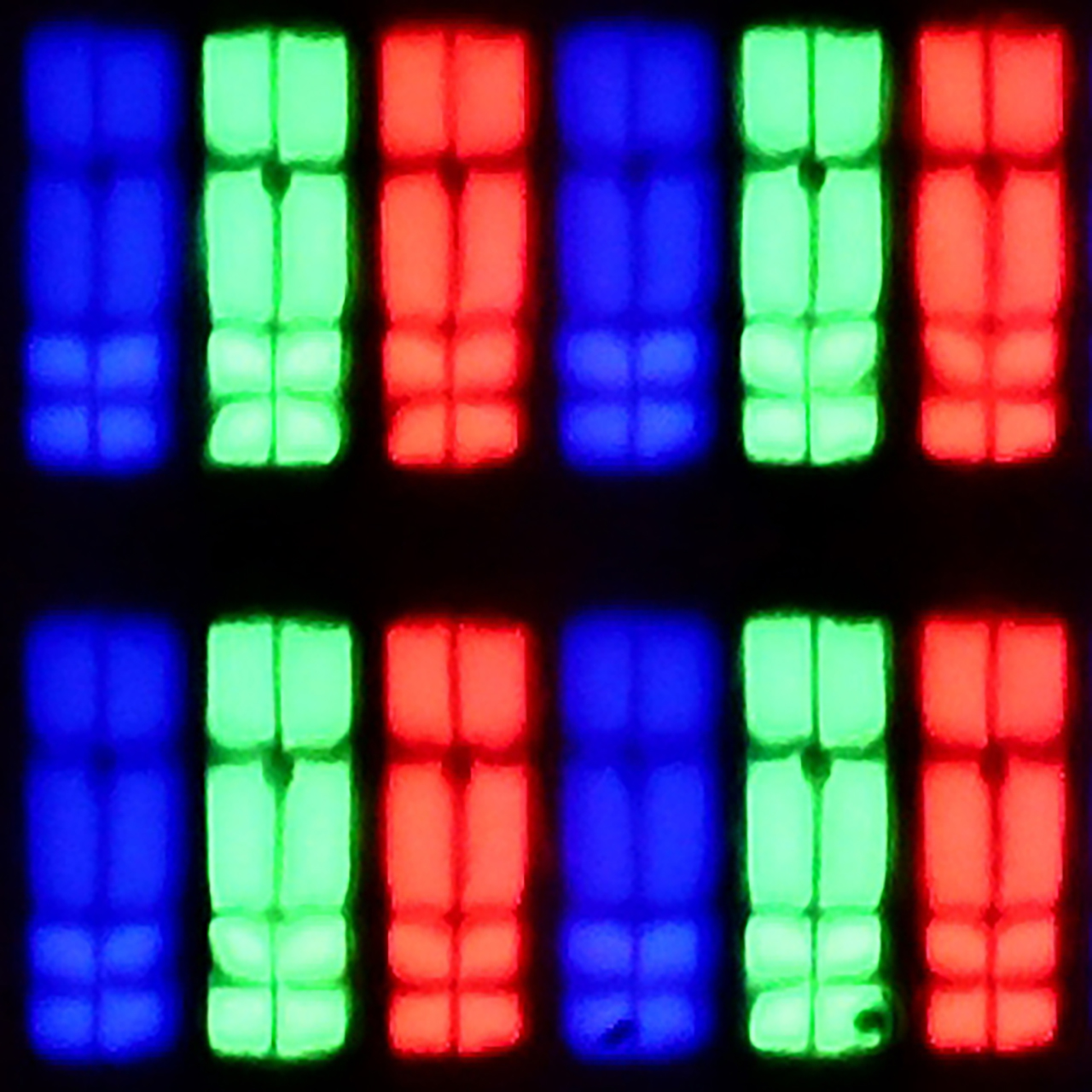

Panel uniformity and thermal imaging:

TCL C7K / QM7K
Samsung Q7F
TV features
7.3/10
6.6/10
- HDMI inputs2 x HDMI 2.0, 2 x HDMI 2.1 48Gbps3 x HDMI 2.0, 0 x HDMI 2.1
- OutputsToslink (Optical audio), eARC (HDMI), ARC (HDMI)Toslink (Optical audio), eARC (HDMI), ARC (HDMI)
- Network InterfacesWi-Fi 2.4GHz, Wi-Fi 5GHz, Ethernet (LAN) 100MbpsWi-Fi 2.4GHz, Wi-Fi 5GHz, Ethernet (LAN) 100Mbps
- TV receptionDVB-T, DVB-T2, DVB-S, DVB-S2, DVB-CDVB-T, DVB-T2, DVB-S, DVB-S2, DVB-C
Classic features:
- Recording to USB (terrestrial TV)
- Recording programming
- Picture in Picture (PiP)
- RF remote control (no need to aim at the screen)
- Backlit remote control
- Teletext
- Audio only mode
- Bluetooth headphones support
- Simultaneous Bluetooth headphones & TV audio
Smart features:
- AirPlay
- Screen mirroring (Windows Miracast)
- Voice search
- Voice search in native language
- Ability to connect a keyboard and mouse
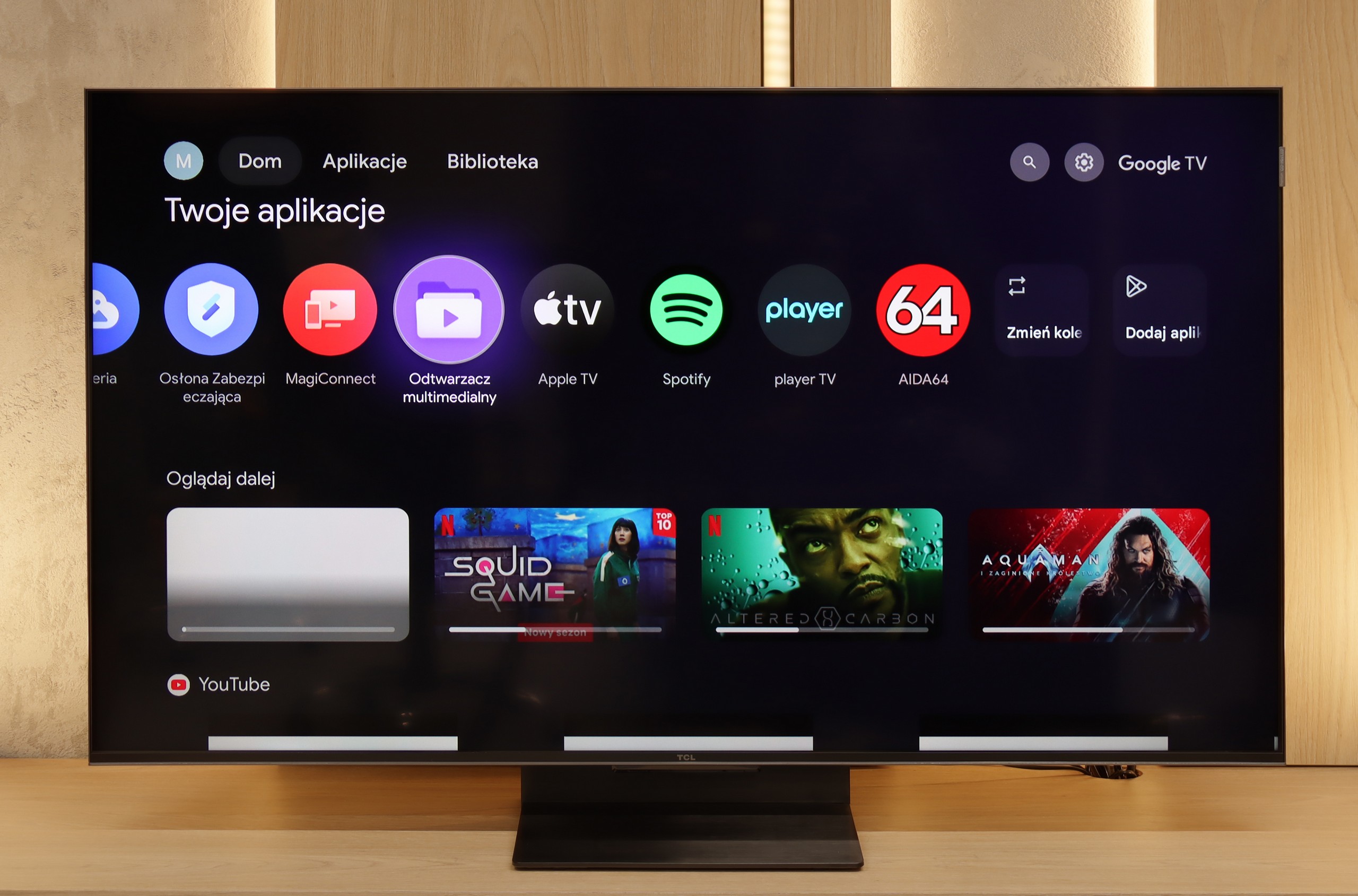
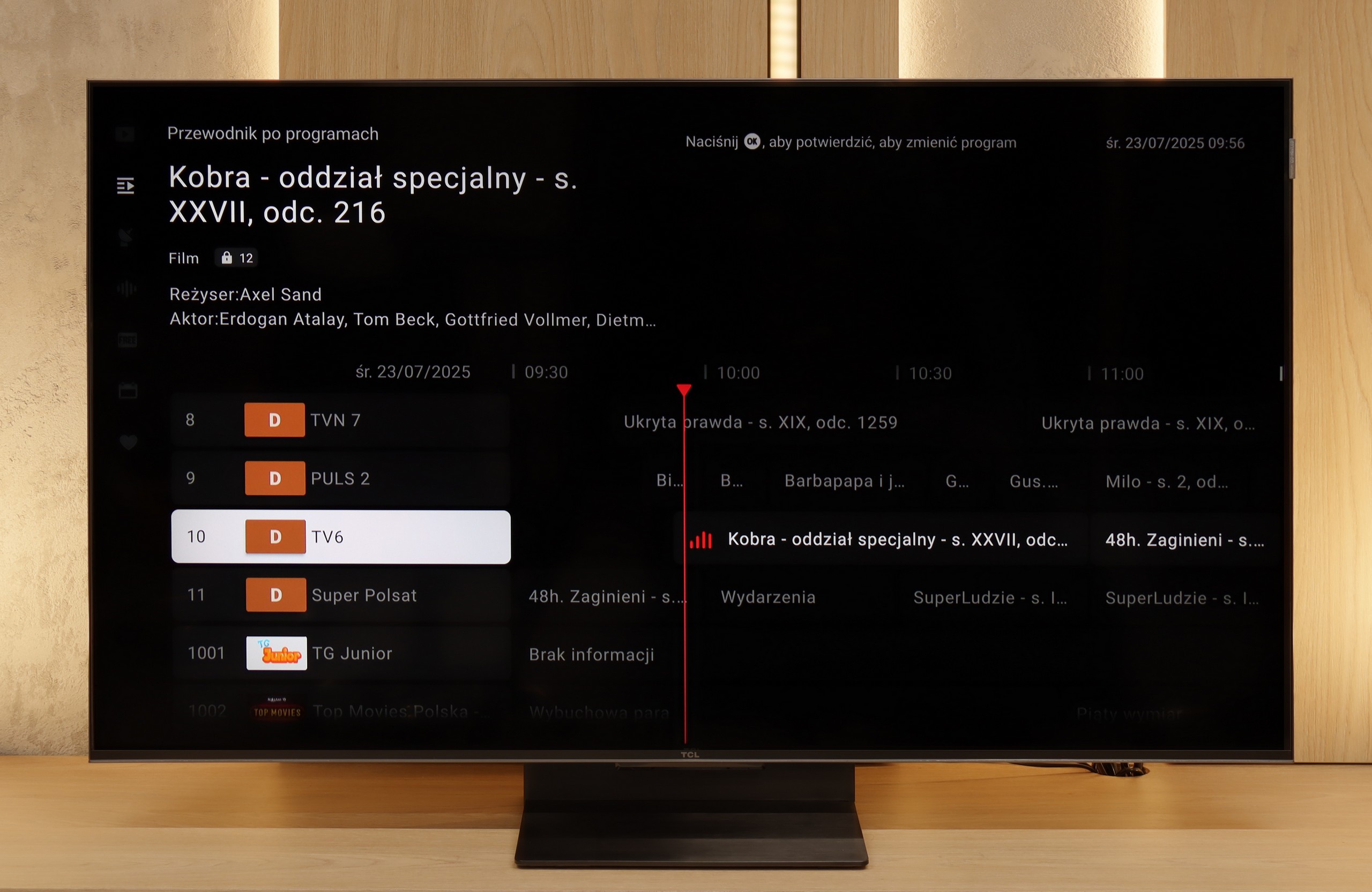
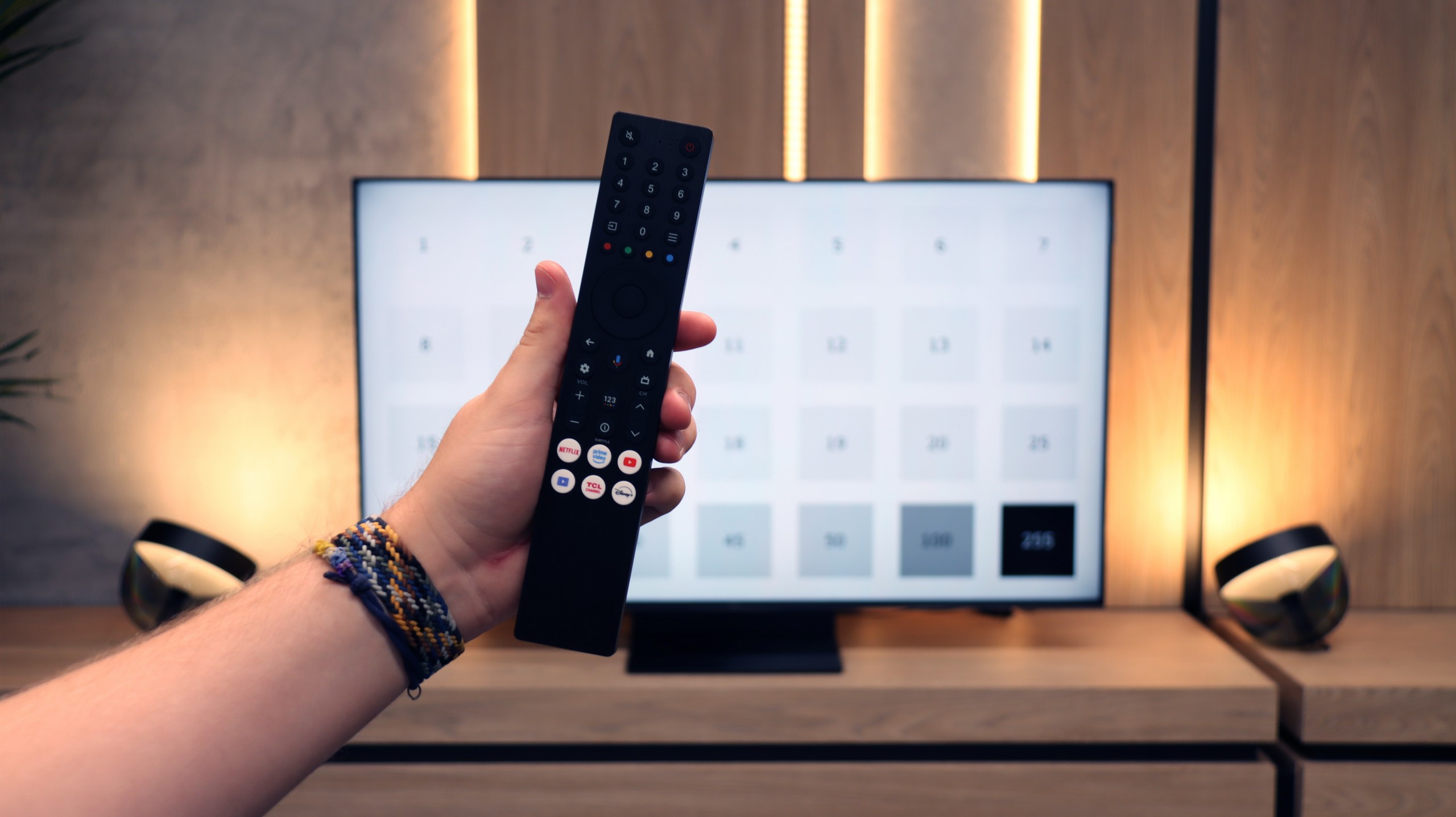
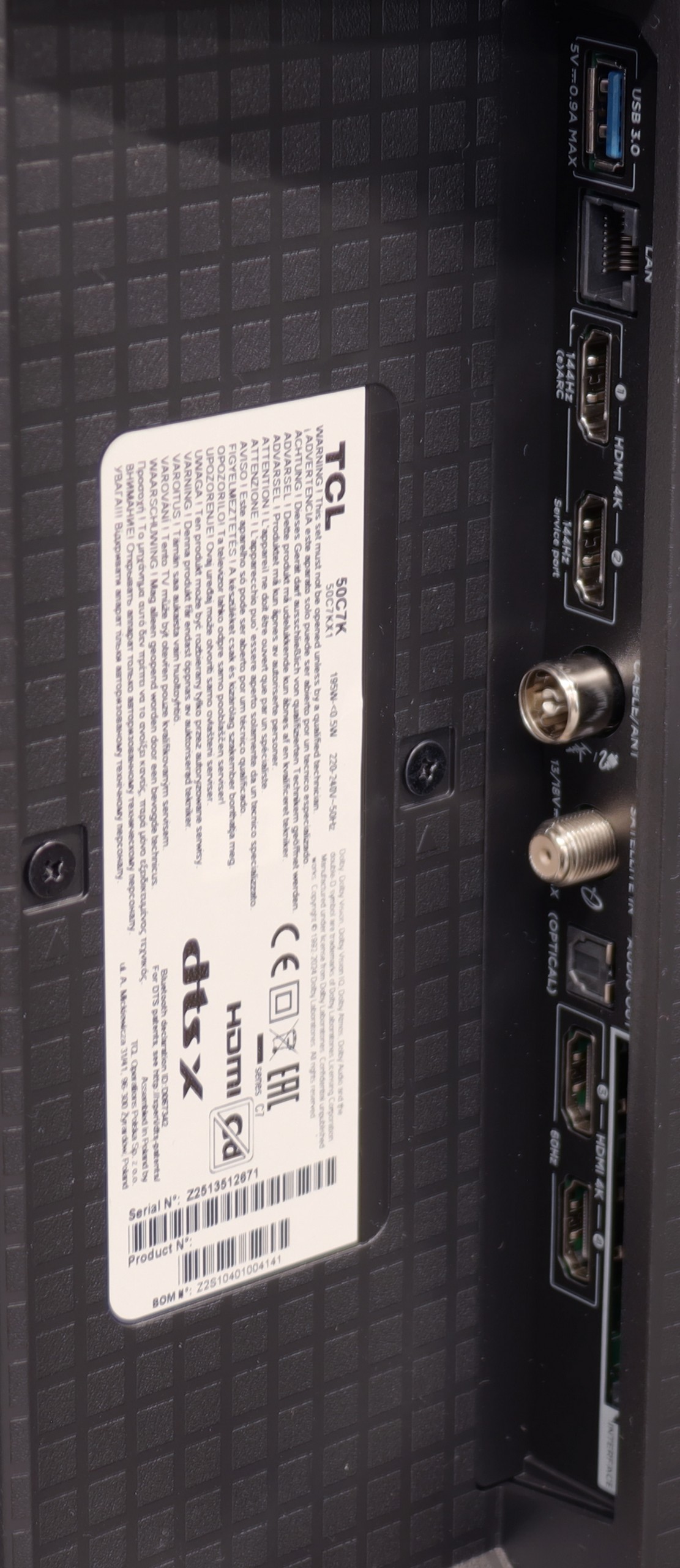




SmartTV: GoogleTV
The greatest strength of the TCL C7K in everyday use is undoubtedly the Google TV system. Thanks to it, we have access to an almost endless library of applications, including some more niche ones that are often unavailable on other platforms. The built-in Google Assistant understands Polish, so we can easily ask what’s on TV, what the weather is like, and even issue a few voice commands to control the television. The presence of Chromecast and AirPlay, which work smoothly and make life easier, is also a plus.
User Functions
On the downside, the classic features are somewhat lacking. Of course, we have the basics – teletext, EPG, and the ability to connect headphones – but that’s about it. There is no USB recording feature or picture-in-picture (PiP) mode, which can still be found among competitors. It’s also worth remembering that Google TV in the TCL edition can sometimes have strangely translated parts of the menu or minor errors in the interface. These are not things that interfere with daily use, but those sensitive to details may notice them.
Smart TV – Tizen System
Here Q7F shows its strongest side. Samsung has been developing the Tizen system for years, and it is evident that we are dealing with a mature, well-refined platform. Everything runs smoothly, the menu does not lag even when switching between heavier applications, and installing additional programmes from the library is quick and hassle-free. In addition, there is full support for AirPlay, integration with voice assistants, as well as a wide range of add-ons – from cooperation with devices in the SmartThings ecosystem to the ability to control Philips Hue smart lighting or other smart gadgets. Samsung strongly focuses on advanced networking features, and this is evident – in terms of Smart TV, the Q7F has absolutely nothing to be ashamed of, and on the contrary, it can embarrass more expensive competitors.
Classic Features
On the side of classic, “television” solutions, it is clear that the manufacturer has bet everything on the smart card. We will not find any USB recording or PiP mode here, which used to be standard features. It is evident that the Q7F is meant to be primarily a multimedia centre, rather than a device for those accustomed to more traditional solutions. Fortunately, several practical additions are not lacking – we have Bluetooth for pairing headphones or speakers, and the option to change the font size in the menu, which will be appreciated by users with weaker eyesight.
Playing files from USB
9.2/10
9/10
Supported photo formats:
Maximum photo resolution:
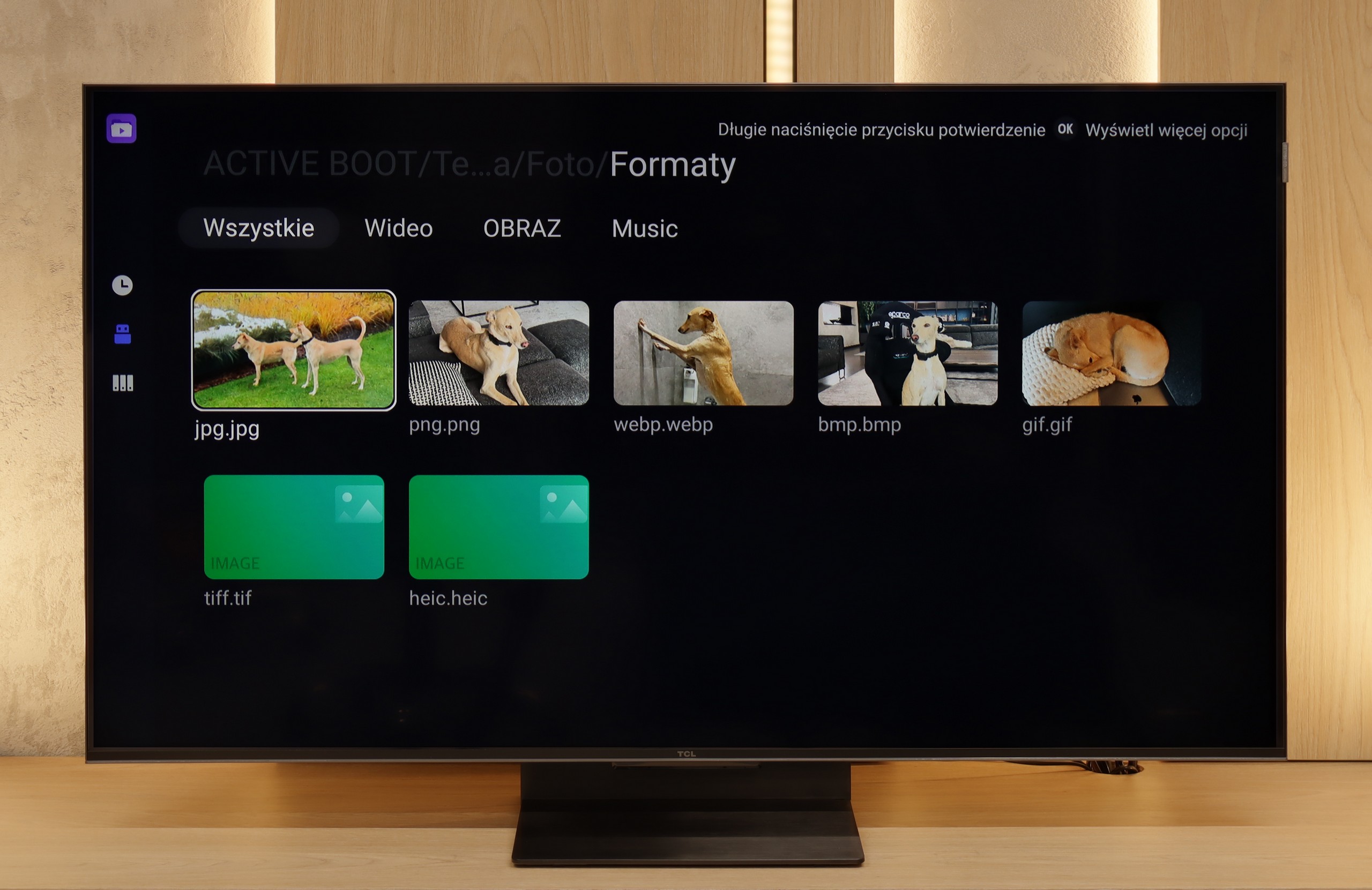

The built-in file player in the TCL C7K performs really very well. It supports most of the most popular audio and video formats, so if we want to quickly plug something in from a USB drive and play it – there should be no problem. Of course, as is usually the case, we can find some minor shortcomings – not every exotic codec will work (Apple's HEIC), not all subtitles will be perfectly synchronised (txt.). However, the biggest advantage of this television comes to the rescue, namely Google TV. Thanks to access to the Google Play store, we can easily install an alternative player, e.g. VLC, and then no files will be a concern for us.
In the Q7F we have a built-in file player, and as is usually the case with Samsung televisions, it works quite well – most popular films or music will play without fuss. For basic use, it is sufficient, and there is no real need to reach for external solutions like connecting a laptop. It is worse if someone wants to upload photos – here it can lag, especially with Apple's HEIC or PNG, which are visible in the player menu but do not necessarily want to work.
Apps
9.6/10
8.7/10














































Sound
7/10
5.8/10
- Maximum volume76dB80dB
- Dolby Digital Plus 7.1
- Dolby True HD 7.1
- Dolby Atmos in Dolby Digital Plus (JOC)
- Dolby Atmos in Dolby True HD
- DTS:X in DTS-HD MA
- DTS-HD Master Audio
To be honest, we didn’t expect much from the sound of the 50-inch version of the C7K model. Typically, in such sizes, it’s hard to get anything more than thin, flat sound. But here – a pleasant surprise. The audio proved to be really enjoyable, with good clarity and even a slightly discernible bass. This is probably related to TCL's new collaboration with the Bang & Olufsen brand, which is a novelty for 2025. Whether the C7K actually uses the original transducers from the Danish premium brand – we cannot confirm. But the end result still deserves a thumbs up. For a television without a soundbar – it sounds quite pleasant.
The Samsung Q7F comes with a 20 W speaker system and… well, let’s not kid ourselves, it’s nothing revolutionary. The television itself sounds quite decent, meaning we can clearly hear series, news, or daily programmes; dialogues do not get lost, but there’s a significant lack of depth and sound space. There is virtually no bass; it thuds somewhat, but it resembles more of a box being tapped rather than true low tones. Music comes across flat, and films don't make any significant impression – we won’t feel like we're in a cinema. It’s sound from the ‘acceptable’ category, just enough to have something built-in, but if someone is counting on a stronger experience, they will inevitably reach for a soundbar sooner or later. And to be honest – even the simplest model will make a considerable difference, and Samsung has quite a few in their offering.
Acoustic Measurements
76dBC (Max)
75dBC
80dBC (Max)
75dBC


